

Voyage Charter vs Time Charter
Ships, boats and other recreational vessels are owned by a large number of individuals who often purchase them as assets. They do not use these vessels for shipping goods or for ferrying passengers.
Instead, they often lend them out to third party organizations who use them for a variety of purposes. In maritime legal terms, this lending process is known as chartering. Chartering is an important concept of the global maritime trade sector, and is of different types.
This article will delve into the differences between two specific categories of charters – the voyage charter and the time charter.

What is a Charter?
A charter is an agreement between two or more groups known as charter parties, regarding the leasing of a vessel for a fixed set of conditions. The terms and conditions stipulated in the charter are binding on all the parties in the agreement and covers a wide variety of clauses and possible scenarios that may arise. It is considered to be an official document in legal aspects and is required by Admiralty Law to be drawn up in case of any form of vessel hiring or leasing.
A shipowner is the first party in the charter agreement who owns the vessel under consideration. The charterer is an individual or organization who is in need of a ship.
The charterer may have cargo that he wishes to transport, or may further lease out the vessel to third parties.
The shipbroker is a link between ship owners and charterers, and aids in finalizing the terms of the agreement. The terms of the agreement include the duration of leasing, fees, payment instalments, regulations on usage, and detailed surveyor reports on the condition of the ship.
Payment is termed as a freight rate and is remitted to the shipowner at fixed intervals decided in the agreement.
Surveyor reports are important in chartering, as they ensure that the vessel is seaworthy prior to being chartered. Similarly, on completion of a charter agreement, and before final payment formalities, another survey report is conducted to ensure that the vessel has sustained no damage during the lease period.
The charter agreement lays down the responsibilities of each group and stipulates the condition in which the vessel is to be maintained.
There are three main types of charters – voyage charter, time charter, and demise charter.
The demise charter is often known as a bareboat charter, and grants ownership or possession of the vessel to the charterer subject to certain time-bound conditions.
Terms and Features of a Voyage Charter
A voyage charter is a type of charter in which a vessel is leased out for a particular voyage. The charter agreement lists the ports of call, destination, and restrictions on cargo, if any.
Most voyage charters are undertaken by charterers who have cargo that needs to be shipped. For this, they contact ship owners through brokers and arrange a ship for a particular voyage.
Payment of voyage charters can be done in two methods – on a per-ton basis, or on a lump-sum basis .
The per-ton basis involves paying the owner for every ton of cargo or freight transported on the vessel. This is preferred when the cargo tonnage is considerably lower than the gross maximum cargo tonnage of the vessel.
On the other hand, when a higher weight of the cargo is carried, it is advisable to pay on a lump-sum basis . The shipowner must ensure that the tonnage carried on board the vessel is within the acceptable limits of the ship. This includes checking the tonnage of on-deck cargo, and the various load lines of the vessel.
There are some important terms used in a contract agreement, that lays out the time-based rules to be followed for the duration of the contract.
Laytime refers to the time that a charterer is allowed to complete the loading and unloading process at a port of call. Since the owner pays duties and berthing charges at the port, they expect the charterer to hasten the process.
In case the charterer exceeds the laytime laid out in the contract, he is obliged to pay a penalty known as demurrage . This covers the extra costs incurred by the shipowner owing to the delay by the charterer.
On the other hand, if the ship is able to complete the loading and unloading operations before the stipulated time, the charterer can claim payment of a despatch from the owner. This is often seen as an incentive for charterers to complete the port operations as soon as possible.
In voyage chartering, the shipowner undertakes payment of fuel, operation, and employment-related costs. It is their responsibility to hire the officers and other crew members for the voyage either from a pool of individuals working for them, or using brokers as middlemen to source mariners and seafarers.
In addition, the owner must also pay costs such as berthing and loading operations. Any equipment used must also be paid for by the owners.
To recoup these costs, the owners charge a higher rate from the charterer. In general, charterers transporting a one-off consignment prefer voyage charters despite the high cost. This is because they are not tied down to the contract for a long period of time.
Simply put, a voyage charter involves a charterer hiring a vessel for the purpose of a single voyage, in which the route and ports have been pre-determined. The responsibility of duty and other payments along with recruitment is handled completely by the shipowner, while the cargo is the sole responsibility of the charterer.
Terms and Features of a Time Charter
A time charter is a time-bound agreement, as opposed to a voyage charter. The shipowner leases a vessel to a charterer for a fixed period of time, and they are free to sail to any port and transport any cargo, subject to legal regulations.
Although the charterer controls the ship, the maintenance of the vessel still falls under the purview of the owner. They are responsible for ensuring that the vessel meets internationally accepted maritime standards, throughout the course of the agreement. They regularly employ marine surveyors to prepare reports on the seaworthiness of the vessel and make repairs as and when required. The owner will face legal action in case the vessel is found to have some major problem.
The time charter agreement can span anywhere from a few days to a few years. This is a long-term agreement that works on a single rate of payment known as the freight rate.
Payment is to be remitted every quarter and does not fluctuate under ordinary circumstances.
In time chartering, the charterer is responsible for selecting a crew, paying charges that arise during the voyages, and arranging for provisions to ensure smooth operations at every port of call. They must intimate the planned route to the owners in advance. The payment is calculated on a per-day basis, with penalties added at a later time. The cost of fuel, provisions etc. are to be covered by the charterer, while the owner will handle all maintenance-related costs.
The charterer often does not sail on the vessel and provide instructions to the master of the vessel in their stead. This includes permissible cargo, route and ports, required charter speed etc.
Unlike voyage charters that use a rigid payment calculation, there are several provisions for unforeseen delays in time charters.
Since payment is on a daily basis, the charterer may be delayed for a certain reason, and these are covered in the agreement.
Time not included in the final payment is known as off-hire hours . For instance, if a vessel is slowed down because of poor weather that could not have been predicted, the extra time spent is not included in the final time count.
Similarly, if some form of damage occurs and repairs need to be carried out, the duration is considered to be off-hire . Certain clauses can be inserted in the agreement, that allows for a fixed number of off-hire hours. Beyond this, the charterer is charged for delays.
Briefly put, a time charter involves leasing a vessel for a fixed period, on a per-day rate, where the charterer is free to use the vessel. The owner only looks after maintenance-related cost.
Clauses are inserted to protect the charterer from having to pay for hours that were spent due to events that could not have been foreseen.
How to Choose a Charter Type
Voyage and time charters are very different, in their intended use and service conditions. Knowing when to choose each type of charter can go a long way in meeting expectations of the charterer and shipowner.
A voyage charter is preferred in cases where the charterer only needs the vessel for specific voyages that may arise for different reasons. This could be the case when there is an occasional cargo to transfer.
An occasional cargo commonly springs up during sudden surges in demand, when the supply services are down. Thus, companies that may deal in other commodities may enter the cargo industry for that period of time, in order to make a profit.
This can also happen when the charterer has already pressed into service their own fleet of vessels, which forces them to hire a ship from a third party so that they may undertake a single voyage.
Voyage chartering can be tricky for inexperienced charterers, since the matter of the crew and equipment must be handled correctly.
Most owners make arrangements to look after these requirements, but it is mostly based on goodwill. Having a shipbroker negotiate the terms can be very helpful in ensuring that the occasional charterer is not inconvenienced by having a ship without a crew to man it.
A time charter is more commonly used by more experienced chartering firms when there is a long-term requirement for a vessel. Instead of having to specify the ports and routes undertaken by the vessel in the charter agreement, the charterer simply hires the boat for a fixed period of time and takes complete control over the vessel in all but name.
As they are free to sail to any destination with any group of crew and officers, it is beneficial to companies that already deal in shipping. For instance, if a ship is decommissioned or is sent in for repairs, the company needs to be able to procure a vessel for the duration of that period.
Instead of having to book a ship every time they wish to undertake a voyage, they use time charters. Thus, for the duration of the agreement, they will have possession of the vessel and are free to use it, within the purview of the law. This is especially useful since such a charterer will often already have a crew ready to take over the hired vessel.
Another major factor that sways the decision to pick either a voyage or time charter is the finances of the shipping industry. Voyage chartering is considered to be a volatile market since there is no assurance of leasing a boat on completion of an existing contract. Since it is only applicable for a single voyage, the overall volatility of the voyage charter is high.
However, charterers prefer voyage charters for the reason that they can always get a more competent rate from other ship owners. In other words, the owners are at the mercy of the chartering sector.
So, most ship owners prefer time charters, as it guarantees financial returns for a fixed period of time, at a fixed rate. This offers some protection against rapid fluctuation of the chartering rates. However, charterers do not prefer this contract, as it ties them down at a single rate for an extended period.
A one-off charterer always goes for a voyage charter, while a regular charterer prefers time charters. Shipowners are often directly approached by charterers, instead of having marine brokers. Thus, one must have an overall look at various factors influencing the shipping sector, prior to choosing between a voyage and time charter.
Overall Comparison
Table of responsibilities.
You may also like to read –
- 8 Main Factors that Affect Ocean Freight Rates
- What is the Difference between Lay days and Lay time?
Disclaimer: The authors’ views expressed in this article do not necessarily reflect the views of Marine Insight. Data and charts, if used, in the article have been sourced from available information and have not been authenticated by any statutory authority. The author and Marine Insight do not claim it to be accurate nor accept any responsibility for the same. The views constitute only the opinions and do not constitute any guidelines or recommendation on any course of action to be followed by the reader.
The article or images cannot be reproduced, copied, shared or used in any form without the permission of the author and Marine Insight.
Do you have info to share with us ? Suggest a correction
Latest Maritime law Articles You Would Like :

How Port and Terminal Operators Can Control Emissions?

Minimum Quantity Commitment (MQC) and Liquidated Damages in Container Shipping: Concept and Relevance

The Essential Guide to Shipping Container Dimensions – What You Need to Know

A Comprehensive Overview of IMDG Code for Shipping Dangerous Goods

Nautical Law: What is UNCLOS?

Commoditisation of Container Shipping: How Carriers Can Counter or Mitigate the Impact Thereof

Latest News

Web Stories
Subscribe To Our Newsletters
By subscribing, you agree to our Privacy Policy and may receive occasional deal communications; you can unsubscribe anytime.

About Author
Ajay Menon is a graduate of the Indian Institute of Technology, Kharagpur, with an integrated major in Ocean Engineering and Naval Architecture. Besides writing, he balances chess and works out tunes on his keyboard during his free time.
Great article that provides lots of fundamental knowledge! Kudos to the author, thank you!
@Edward: Glad you liked it 👍
Leave a Reply
Your email address will not be published. Required fields are marked *
Subscribe to Marine Insight Daily Newsletter
" * " indicates required fields
Marine Engineering
Marine Engine Air Compressor Marine Boiler Oily Water Separator Marine Electrical Ship Generator Ship Stabilizer
Nautical Science
Mooring Bridge Watchkeeping Ship Manoeuvring Nautical Charts Anchoring Nautical Equipment Shipboard Guidelines
Explore
Free Maritime eBooks Premium Maritime eBooks Marine Safety Financial Planning Marine Careers Maritime Law Ship Dry Dock
Shipping News Maritime Reports Videos Maritime Piracy Offshore Safety Of Life At Sea (SOLAS) MARPOL
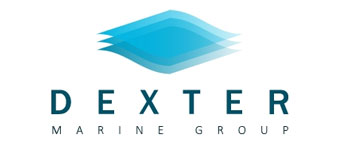
Voyage Charter vs Time Charter – Everything You Need to Know
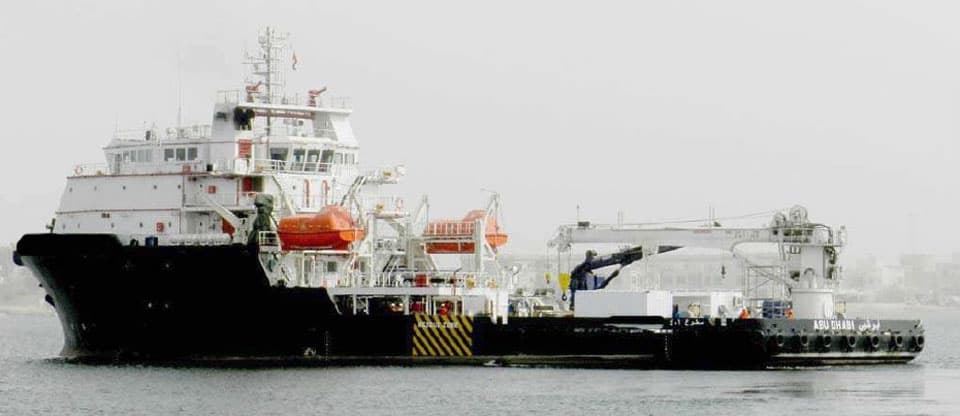
Voyage Charter vs Time Charter – Everything you need to know.
One of the biggest questions facing a charterer is whether to opt for a voyage charter or a time charter. Evaluating voyage charter vs time charter can be a complex process, but we’ve broken everything down on this page, making it easier for charterers to decide which type of vessel chartering is best for them.
1. What is a Charter? 2. What is a Voyage Charter? 3. Voyage Charter Features/Terms 4. Voyage Charter Pros & Cons 5. What is a Time Charter? 6. Time Charter Features/Terms 7. Time Charter Pros & Cons 8. How to Choose a Charter Type 9. Charter Cost 10. Ongoing Cost 11. Flexibility 12. Contract Length 13. Convenience 14. FAQs About Voyage Charter and Time Charter 15. Conclusion
What is a Charter?
A voyage charter and a time charter are two options commonly found in the chartering business. A voyage charter is when the charterer leases a vessel for a specific voyage, such as Dubai to Singapore, while a time charter is a type of lease that allows the charterer use of the vessel for a specific period of time.
As you might imagine, there are many differences between these two types of charters, and both vessel chartering options have their own pros and cons. Keep on reading this page about voyage charter vs time charter to find out which of the two options will be most suitable for your ship chartering requirements.
Voyage Charter
What is a voyage charter.
A voyage charter is a type of ship chartering that sees the charterer agree to lease the vessel for one specific voyage. So, for example, the agreement might be for the charterer to gain use of the charter ship for a journey from Dubai to Dover.
Features/Terms
As just mentioned, a voyage charter is when a charterer leases a vessel for one voyage. Before the charter contract is signed, the parties will agree on the end destination, any ports of call, and whether there will be any restrictions on cargo. Once signed, the charterer must not deviate from any of these agreements.
The terms and conditions of the charter agreement will also stipulate the laytime permitted. The laytime refers to the amount of time it takes for the vessel to be loaded and unloaded. As the ship owner pays for all costs at the port, they need this process to be as quick as possible. If the charterer exceeds the agreed time, they must pay demurrage to the ship owner. Conversely, the ship owner will usually refund some money if the loading and unloading is quicker than stipulated.
But who is responsible for what costs? Well, with a voyage charter, nearly all costs are covered by the ship owner. These include costs relating to staffing, berthing, loading, unloading, and fuel. They cover these costs by charging the charterer a fee for leasing the vessel.
The amount of money paid by the charterer can be determined in two ways. The most common way to pay is on a per-ton basis. As the name implies, this sees the charterer paying a set price for every ton of cargo they transport. This is preferred by charterers when the amount of cargo they’re transporting is significantly less than the vessel’s gross maximum cargo tonnage.
The other payment type is a lump sum – one payment that allows the charterer to transport as much cargo as they want to. It is the ship owner’s responsibility to ensure the cargo weight does not exceed the gross maximum tonnage of the vessel. This type of payment is preferred by charterers when they’re carrying a higher weight of cargo.
This type of vessel chartering is generally preferred by charterers. This is because it often has more competitive prices, plus they are not tied down to any long-term commitments.
Pros & Cons
Pro: Charterer not liable for any costs, except initial charter fee Pro: Incentives to complete port operations quickly Pro: No need to find a crew Pro: No long-term contract
Con: Lack of flexibility for charterer Con: Higher initial charter fee
Time Charter
What is a time charter.
A time charter is a type of vessel chartering that sees the charterer lease the ship for a set period of time. So, they might lease the ship for two months, during which time they have the flexibility to choose their own routes and destinations.
Before anything is signed, the ship owner and the charterer will agree the exact period of time the lease will run for. Unlike with voyage charters, the two parties will not need to agree on ports of call and destinations, as the charterer has complete discretion over this.
With a time charter, the ship owner does not cover all costs. Instead, the charterer must pay for fuel and supply costs, as well as the cost of cargo operations. However, the charterer won’t have to pay such a large charter fee, which balances things out somewhat. The owner is still required to pay for the crew and ongoing maintenance, and also must ensure the vessel meets all necessary maritime safety standards.
It is generally the case that the charterer will pay for hire in advance, on a per-day basis. Payment is not usually made in one lump sum, with the charterer instead paying the lease charge in set instalments, which are usually quarterly. It’s important to note that, should the ship be held up in unforeseen circumstances, such as inclement weather, the lost time – referred to as off-hire hours – will not usually be charged for, although if too many off-hire hours are accrued, the charterer might end up being liable.
Ship owners generally prefer their vessels to be leased on a time charter. This is because time charters guarantee income for a long period of time, giving the ship owner increased security.
Pro: Guarantees charterer access to a vessel Pro: Initial lease cost is lower Pro: More flexibility for the charterer
Con: Several ongoing costs to pay Con: Tied down to long-term contract
How to Choose a Charter Type
We’ve discussed voyage charter vs time charter above, looking at the various pros and cons of each. But which should you choose when looking to charter a ship?
Well, this really depends on your requirements. We’ve broken things down into five sections – charter cost, ongoing costs, flexibility, contract length, and convenience – and will let you know which of the ship chartering options is better for each one.
Charter Cost
When it comes to the initial cost of chartering a ship, it’s nearly always going to be cheaper to go with a time charter. This is because the ship owner will be more amenable to a lower price, as they know you’ll be hiring the vessel for longer. What’s more, you, and not the ship owner, will be expected to cover other costs, pushing the initial price down further.
So, if you’re looking for the lowest possible upfront cost, the best option is a time charter. However, remember that other costs will also need to be paid.
Ongoing cost
If you choose to take out a time charter, you will have to pay several costs, including fuel and supply costs. With voyage charters, the only significant cost payable is the initial charter – all other major expenses are covered by the ship owner.
Therefore, if you want the lowest possible ongoing costs, the clear winner is the voyage charter. However, the upfront cost will be more expensive than a time charter.
Flexibility
Those who sign up for a voyage charter are limited in their movements, as they will have already agreed a set route with the ship owners. Those who have taken a time charter have far more freedom, as they can choose where to go throughout their charter.
This clearly means that those looking for more flexibility should opt for a time charter, as there are no limitations on route, ports of call, and destinations.
Contract Length
With a time charter, you’re tied into a long contract, committing you to ongoing payments. Voyage charters, on the other hand, only last for the duration of the voyage, meaning voyage charters are generally much shorter than time charters.
This all means that those looking for the shortest contract should opt for a voyage charter. However, if you know you’ll constantly need an available vessel, the long contract of a time charter could be more suitable.
Convenience
There will be no need to hire and pay a crew when opting for either the time charter or the voyage charter. It’s only bareboat charters that require the charterer to hire and pay their own crew. However, the ongoing costs associated with time charters can be inconvenient.
Overall, voyage charters are the more convenient of the two options, as there’s no need to organise payment for such things as port costs and fuel. However, both options are generally far more convenient than a bareboat charter.
FAQs About Voyage Charter and Time Charter
What are BIMCO Sanctions Clause for Voyage Charter Parties 2020?
These are intended to help in two scenarios. Firstly, if one of the signatories of the agreement gets sanctioned, the other signatories will be able to end the contract and claim damages. Secondly, when the trade or activity is subject to or becomes subject to sanctions, the ship owners can refuse to perform their contracted duties.
What is the difference between bill of lading and charter party vs time and voyage charter?
A charter party is an agreement between charterer and ship owner to lease a ship. A bill of lading is an agreement that legally obligates the charterer to carry cargo that has been loaded aboard the ship.
A time charter is a type of vessel chartering whereby the ship owner leases the ship for a set length of time. A voyage charter is a type of vessel chartering whereby the ship owner leases the ship for the duration of a specific voyage.
What are the duties and responsibilities of the ship owner and charterer under a time charter and voyage charter party?
Under a voyage charter, the ship owner assumes almost all responsibility, including hiring and paying crew, and paying for all significant costs associated with the journey. The charterer simply has to pay the ship owner a fee to secure their vessel.
With time charters, ship owners must still hire and pay staff. However, most other significant costs associated with a voyage, such as fuel and port fees, must be paid by the charterer.
Why do ship owners prefer voyage charter over time charter?
Quite simply, they don’t. Ship owners usually prefer time charters, as they ensure that their ship is guaranteed to be chartered for a longer period, generating income throughout.
Voyage charters are short, meaning the ship owner must continually find new charterers to lease the vessel to – something that isn’t always possible. When a new charterer can’t be found, the ship owner loses money.
Please note that charterers are required to take out insurance for both types of charter, to cover them against damage, injury, marine salvage , and more.
Those looking for short-term charters are best served by opting for a voyage charter, as these don’t require a long contract to be signed. They do have a higher initial cost, but this is offset by the fact that no other significant fees need to be paid.
However, those who know they’ll regularly require the use of a vessel might be better off with a time charter, as these see vessels leased for a long period of time. During this time, the vessel can be used to travel anywhere, without restriction. Time charters cost less upfront, but require the charterer to pay various other costs, such as the cost of fuel and port fees.
Have you found this page to be helpful? If so, please share it on social media! Also, feel free to leave a comment below!

DEXTER OFFSHORE LTD
Mazaya Business Avenue – BB2- 1403 – First Al Khail St – Dubai, United Arab Emirates Tel: +971 04 430 8455
MORE INFORMATION
Contact Us About Us Meet Our Team QHSE Policy
CONNECT WITH US
LinkedIn Facebook Instagram YouTube


Types of Charter Agreements: Time, Voyage, and Bareboat
Types of Charter Agreements: Time, Voyage, and Bareboat. In the intricate web of the maritime industry, charter agreements are the threads that connect shipowners and charterers, facilitating the movement of goods across the world’s oceans. These agreements come in various forms, each tailored to specific needs and circumstances. Among the most common types of charter agreements are time charters, voyage charters, and bareboat charters. In this article, we will delve into the details of these three fundamental charter types, exploring their characteristics, benefits, and when to use them.
1. Time Charter:
A time charter agreement is a widely employed arrangement in the maritime industry. In this type of charter, the shipowner leases their vessel to the charterer for a defined period, typically ranging from a few months to several years. During the charter period, the charterer gains operational control of the vessel, including selecting the ports of call and determining the cargoes to be transported.
Key Aspects of Time Charters:
– Operational Control: While the charterer assumes operational control, the shipowner retains ownership of the vessel. The shipowner provides and maintains the crew, and the charterer is responsible for covering the vessel’s operating expenses, including crew wages, fuel, and maintenance.
– Flexibility: Time charters offer flexibility to both parties. Charterers can adapt to changing market conditions and cargo requirements, while shipowners can secure steady revenue over the charter period.
– Revenue Structure: The charterer pays the shipowner a fixed daily rate, known as “hire,” for the vessel’s use. This rate is typically negotiated and agreed upon in advance. The charterer may also pay additional voyage-related expenses.
– Types of Cargo: Time charters are suitable for various types of cargo and are often used for transporting bulk commodities, such as coal, grains, and minerals, as well as containerized goods.
2. Voyage Charter
A voyage charter agreement, as the name suggests, is focused on a specific voyage or journey. In this arrangement, the shipowner provides the vessel to the charterer for a single voyage, from a designated port of loading to a port of discharge. Voyage charters are ideal for one-time cargo movements or irregular routes.
Key Aspects of Voyage Charters:
– Single Voyage: Unlike time charters, which cover an extended period, voyage charters are limited to a single voyage. Once the cargo is delivered, the charter agreement is completed.
– Freight Charges: The charterer pays freight charges based on the cargo’s weight or volume and the distance traveled. The shipowner remains responsible for all operating costs.
– Flexibility: Voyage charters offer flexibility to charterers, allowing them to choose specific vessels and routes for each voyage based on market conditions and cargo requirements.
– Cargo Variety: Voyage charters are commonly used for transporting a wide range of cargo, from raw materials to finished goods. They are particularly useful for cargo with specific loading and discharge locations.
3. Bareboat Charter (Demise Charter)
A bareboat charter, also known as a demise charter, represents a unique arrangement in which the charterer gains complete control and responsibility for the vessel. In this type of charter, the shipowner effectively transfers ownership to the charterer for the duration of the agreement.
Key Aspects of Bareboat Charters:
– Full Control: The charterer assumes full operational control of the vessel, including crewing, maintenance, and navigation. The shipowner is no longer involved in the vessel’s day-to-day operations.
– Ownership Transfer: During the charter period, the vessel is treated as if it were owned by the charterer. This includes registering the vessel under the charterer’s flag.
– Purchase Option: Bareboat charter agreements often include an option for the charterer to purchase the vessel at the end of the charter period. This option provides a clear path to ownership for the charterer.
– Specialized Use: Bareboat charters are common for specialized vessels, such as offshore platforms, drilling rigs, and research vessels.
Choosing the Right Charter Type:
Selecting the appropriate charter type depends on several factors, including the nature of the cargo, the duration of the transportation need, and the desired level of control. Time charters provide flexibility and steady revenue, voyage charters are ideal for one-time shipments, and bareboat charters offer full control and potential ownership.
In the dynamic world of maritime commerce, understanding these charter agreements is crucial for shipowners, charterers, and maritime professionals to make informed decisions that align with their specific goals and operational requirements. Each charter type serves a unique purpose, contributing to the intricate tapestry of global trade and logistics.
Related Articles

Shipping Companies Interview Questions- Part 4
In this post, question related to what is asked in the interviews of various shipping companies have been discussed. Also the answers to these questions have been discussed. You can also, read in much more details about these topics, in order to get the depth knowledge. Let’s discuss these questions one by one. Question discussed here are having medley of […]
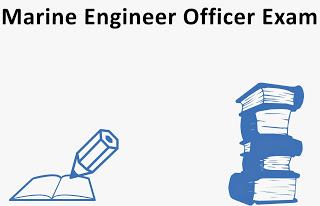
Marine Engineering Practice Questions And Answer-Part4
Here are some of the questions for oral preparation for your engineer COC examinations. This article covers the Marine Engineering Practice questions. These are the questions that we are covering in this article. Some of the questions have been taken from social platforms as well. Marine Engineering Practice Questions 1) Freshwater Generator Starting Here you […]

List of DG Approved Doctors in Goa-Latest
Get to know about DG Approved Clinics in Goa for your medical certificate required for purposes like joining ship etc. Below are the approved doctors from DG Shipping that can carry out medical as per the MLC and other international authorities. Fee of each clinic depends on type of medical you are going for and other facilities provided by them. […]
Leave a Reply Cancel reply
Your email address will not be published. Required fields are marked *
Save my name, email, and website in this browser for the next time I comment.
- Start Business Tips
- Start-up guides
- Content Writing
- Business Ideas
- Home business ideas
- Retail business ideas
- Part-time business ideas
- Buying a business
- Calculating
- Online Payments
- Low cost business ideas
- Working Smarter
- Privacy Policy

Inventory Management 101: A Startup Guide
Starting a therapy business – essential things you need, starting a business in industrial dust collection, starting strong: 10 essential tips for new business owners, how to start a wholesale grocery business: the perfect guide to…, compelling reasons to opt for a career in strategic communication, how to create a comfortable study space as an online college…, crafting excellence in email communication: a deep dive into professionalism, tips for developing your style as an online radio personality, the physical and mental demands of a trucking career, education and edtech: the growing need for advisory services, big ideas math answers – useful resources for students struggling with…, what is the definition for mitigation mission area, which ics functional area sets the incident objectives, voyage charter vs. time charter: choosing the right agreement.

In the vast sea of maritime commerce, choosing the right charter is like setting the correct sail. For shipowners and charterers, this choice boils down to two primary options: voyage charter or time charter.
Think of them as the twin anchors of the shipping world, each with its unique strengths. In this article, we will guide you through the essentials of these two maritime agreements, making it simpler for you to pick the one that fits your needs just right.
Voyage Charter: Navigating the Waters of Single Voyage Agreements
A voyage charter, often called a “trip charter,” is a maritime agreement that revolves around a specific journey from one port to another. This contract type is particularly suitable for shippers with cargo to transport on a one-off basis or for a single voyage. Let’s explore the key features and considerations of a voyage charter:
- Single Voyage Focus
The primary characteristic of a voyage charter is its focus on a single journey, which can be from one port to another or involve multiple ports along the way. The terms and conditions of the charter are tailored to that particular voyage.
- Freight Rate Structure
In a voyage charter, the freight rate is often determined based on the distance traveled, the nature of the cargo, market conditions, and other factors. This allows shipowners and charterers to negotiate rates for individual voyages.
- Charterer’s Responsibilities
Charterers in a voyage charter are typically responsible for loading and unloading the cargo, as well as covering port fees, canal tolls, and other voyage-specific expenses.
Voyage charters are short-term agreements covering the duration of the specific voyage, which can vary from a few days to several weeks, depending on the route and cargo.
Important Factors to Consider When Choosing a Voyage Charter
Cargo Flexibility: One of the notable advantages of a voyage charter is the flexibility it offers in terms of cargo. It allows charterers to specify the type and quantity of goods to be transported. This means that if you have specific cargo needs, a voyage charter might be the best fit.
Cost Control: With a voyage charter, charterers often find it easier to predict costs. They’re typically responsible for the cargo costs, while the shipowner covers the ship’s operational costs. Knowing these expenses upfront helps in budgeting and eliminates any surprises.
Operational Responsibility: In voyage charters, the shipowner retains a greater degree of operational control. They’re responsible for managing the vessel, including its crew and maintenance. This can be beneficial for charterers who prefer not to delve deep into the nitty-gritty of ship operations.
Short-Term Commitment: Voyage charters are generally shorter-term agreements compared to time charters. They’re tailored for specific voyages, which means once the cargo reaches its destination, the agreement concludes. For those not looking for long-term commitments, this is an attractive feature.
Time Charter: The Steady Course of Long-Term Agreements
Now that we have seen what the voyage charter is, let’s take a moment to look at the time charter. A time charter is a maritime contract that revolves around the long-term hiring of a vessel for a specified duration, often several months or years.
In a time charter, the shipowner provides the ship, crew, and maintenance while the charterer gains control of the vessel for a predetermined period. Here’s a closer look at time charters:
Key Features of Time Charters
- Long-Term Commitment
Time charters are long-term agreements, that provide shipowners and charterers with a stable business relationship over an extended period. They are often used when charterers have consistent cargo transportation needs.
- Fixed Rate Structure
Unlike voyage charters, time charters typically involve fixed daily or monthly hire rates. These rates provide predictability for both parties and can help manage budgeting and cash flow.
- Shipowner’s Responsibilities
In a time charter, shipowners are responsible for vessel maintenance, crewing, and operational costs, ensuring that the vessel remains seaworthy throughout the charter period.
- Charterer’s Control
Charterers in a time charter have control over the vessel’s itinerary and cargo loading and unloading schedules within the agreed-upon limits.
Factors to Consider When Going for a Time Charter
Long-Term Planning: Time charters are well-suited for charterers with consistent cargo transportation needs and long-term planning. They offer stability and predictability in terms of vessel availability and costs.
Budget Predictability: Fixed hire rates in time charters allow for easier budgeting, as charterers know their monthly expenses in advance. This can be advantageous for financial planning.
Reduced Operational Burden: Shipowners take on most of the operational responsibilities in a time charter, allowing charterers to focus on their core business without the complexities of vessel management.
Limited Flexibility: While time charters offer stability, they lack the flexibility of voyage charters. Charterers may face constraints if they change routes or adjust cargo volumes frequently.
Voyage Charter vs. Time Charter: What to Consider Before Going for One
Selecting between a voyage charter and a time charter depends on various factors. So before opting for any of the two, you should consider the factors below:
#1: Cargo Volume and Consistency
A time charter may be a suitable option if you have a consistent cargo volume to transport over an extended period. Conversely, a voyage charter may offer more flexibility if your cargo volume varies significantly or you require occasional transport for irregular shipments.
#2: Market Volatility
Consider the prevailing market conditions. Voyage charters can provide opportunities for cost savings when market rates are favorable. However, they also expose you to rate volatility. Time charters offer rate stability, shielding you from market fluctuations.
#3: Budget and Financial Planning
Assess your budget and financial planning needs. If you prefer predictable expenses, a time charter with fixed hire rates may align better with your financial strategy. Voyage charters’ variable rates may require more agile financial planning.
#4: Operational Capabilities
Evaluate your organization’s ability to manage vessel operations. Voyage charters demand more operational involvement from charterers, while time charters relieve them of many operational responsibilities.
#5: Risk Tolerance
Consider your risk tolerance. Voyage charters carry more market-related risks, such as fluctuating freight rates. Time charters provide stability but may entail long-term commitments that limit flexibility.
#6: Cargo Type
The cargo you transport can also influence your choice. Certain cargo types may better suit specific charter types due to their handling requirements or regulations.
In the maritime world, choosing between a voyage charter and a time charter is a decision that can significantly impact your business operations and financial stability. Both charter types have advantages and trade-offs; the right choice depends on your unique circumstances and priorities.
Voyage charters offer flexibility for sporadic shipments and potential cost savings when market conditions align. On the other hand, time charters provide stability, predictability, and reduced operational burden for long-term cargo transportation needs.
Whether you opt for the flexibility of a voyage charter or the stability of a time charter, understanding these maritime agreements will ensure you make informed decisions in the dynamic world of maritime commerce.

Time charter and voyage charter: general guide
This is an introductory article on time charters and voyage charters.
There are three main types of charters in shipping:
Voyage charter
- Time charter.
- Bareboat charter (demise charter).
Charters are often compared to taxis because it is the most straightforward analogy to understand.
Let’s begin with an example:
Sergey orders an Uber to get to work. Sergei pays the price based on distance and traffic jams. He does not pay for gas and does not pay the driver’s wage. If the car waits longer than 3 minutes for Sergey, he pays for the wait time. If the driver breaks the traffic rules, Sergey will not be held responsible (but his boss can reprimand him for being late).
Let’s consider this example in the context of a voyage charter:
Poseidon chartered a vessel to carry 15,000 tons of wheat from Varna to Barcelona. The freight rate is $30 per tonne. The loading and unloading rate is 5,000 tons per working day. The demurrage rate is $2,000 per day.
Now let’s break down the example into components:
- Port of loading and discharge. A charterparty may indicate more than one port.
- The charge for the carriage is the freight. Freight is often calculated per tonne of cargo, although it can also be fixed.
- Time for loading and discharge – laytime. Usually stated as a loading/unloading rate per day.
- Wait time – demurrage.
The shipowner is responsible for the actions of the master and crew. The shipowner may not only be the registered owner of the vessel but also, for example, the time charterer or bareboat charterer.
In a voyage charter, the shipowner pays for bunker, master and crew wages, port charges, and other expenses related to the vessel. These costs are included in the freight rate. The shipowner also bears the cost of repairs to the vessel.
The primary responsibility of the charterer under a voyage charter is to provide the cargo and pay the freight. The shipowner takes care of everything else.
Time charter
A time charter is a car hire with a driver. Back to Sergey:
Sergey went on a business trip to London for a fortnight. He has no time to explore the city, so he has rented a car with a driver. Sergey pays by the day, regardless of the frequency and length of his trips. He also pays for petrol and paid parking. Sergey does not pay the driver’s wage and does not pay traffic fines.
In a time charter, the vessel is not chartered to carry specific cargo from point “A” to point “B”. It’s chartered for a specific period of time. The shipowner provides and pays for the master and crew, as well as the insurance costs for the vessel. As with a voyage charter, the shipowner is responsible for their actions.
A time charterer has more responsibility:
- Instead of the freight for the carriage, the charterer pays hire, a fixed fee for the use of the vessel. As a rule, hire is paid monthly or semi-monthly.
- The charterer pays for bunker, port charges, loading and unloading costs, agency services, etc.
There is no laytime and demurrage in a time charter, as the charterer uses the vessel at his own discretion.
Main terms of a voyage charter and a time charter
There are two types of terms in a charterparty: implied and express. Implied terms automatically apply to all charterparties as a matter of fact or law, even if they are not mentioned in the charter. The express terms are the terms of the charterparty.
Implied terms
There are five main implied terms:
- The shipowner shall provide a seaworthy vessel at the commencement of the voyage.
- The vessel shall proceed with reasonable despatch.
- There should be no unjustifiable deviation.
- Not to ship dangerous goods without notice.
- To nominate safe ports of loading and discharge.
This list is not exhaustive.
Time charter terms
Main terms of a time charter:
- Period of hire
- Trading limits – the geographical limitations in which the charterer is allowed to use the vessel.
- Provisions for the place and manner of delivery of the vessel to the charterer and redelivery to the shipowner
- Laydays/Cancelling – charterer’s ability to terminate the charter if the vessel is not delivered by the agreed date
- Hire rate and payment procedure
- Off-hire – cases where the charterer does not pay the hire because the vessel cannot be used (e.g. due to a breakdown)
- Quantity and payment of bunker fuel
- Cargo allowed for carriage
- Excluded cargo – cargo that the shipowner prohibits carrying on the vessel
- Speed and bunker consumption
- Provisions on the allocation of liability between the charterer and shipowner
Bareboat charter
This article does not cover bareboat (demise) charters, but getting back to Sergey, a bareboat charter is a hire car without a driver. You can read more about bareboat charters here .

English solicitor. I help to win courts and arbitrations in London. I specialise in Gafta and FOSFA arbitrations and maritime law (shipping). Also interested in English cryptocurrency disputes.
Related Posts

Ship Chartering

CIF and CFR (C&F): Obligations of the Parties and Transfer of Risks

International Commercial Arbitration Court at the Ukrainian Chamber of Commerce and Industry: a general guide
Write a comment cancel reply.
Save my name, email, and website in this browser for the next time I comment.
Type above and press Enter to search. Press Esc to cancel.
The ins and outs of ship chartering

Ship chartering is the hiring out the use of a ship by a vessel owner to another company, the charterer, for the transportation of goods. It may sound straightforward enough, but in practicality, it’s anything but simple. There are many different types of charter contracts, various cost components, and of course many different players involved. In this article, we’ll breakdown the ins and outs of chartering, covering how it works, who’s involved and how costs are divided.
- The main players
The two main players in ship chartering are the ship owner and the charterer. There are others as well, the most important being the ship broker. There is also the shipping agent who takes care of the essential in-port details and the ship manager, who takes care of operating and crewing the vessel on behalf of the owner for a fee.
It should be noted that the term charter party refers to the contract itself, and not to the parties entering into the contract. The charter party defines the rate, duration, and terms agreed between the ship owner and the charterer.
The ship owner provides the means for transporting cargo from one port to another. The Charterer enters into a contract with the owner to hire the ship, or space in the ship, for transporting his cargo. In some cases a charterer may own the cargo and employ a ship broker to find a suitable vessel to deliver the cargo for a certain price, called the freight rate.

The charterer may also not have his own cargo, but instead charters a vessel for a certain period of time and trades the ship to carry cargoes at a profit. He can also sub-hire the ship to other charterers in positive market conditions.
The ship broker is essentially a middleman who connects the principals in order to earn a brokerage fee. He can represent either the owner or the charterer in negotiations, and usually specialises in specific areas of cargo carrying. For example, a dry cargo broker focuses on the chartering of bulk carrier vessels. He can represent either an owner looking for a charterer, or a charterer seeking a suitable vessel for shipping his cargo.
Similarly, and as the name suggests, a tanker broker specialises in chartering tanker vessels and has a good understanding of the specific needs for transporting crude oil, gas, oil products, or chemicals.
Shipping Agents are designated to take responsibility for handling shipments and cargoes at the ports on behalf of the owners, fleet managers, and charterers. They handle the essential routine tasks, such as crew transfers, customs documentation, waste declarations and so on, working closely with port authorities. They can also provide detailed information on activities at the destination port, so that the shippers can be aware of situations while the goods are in transit.
- Types of charters
The three most common types of charter contracts are the voyage charter, the time charter, and the demise (or bareboat) charter.
Voyage Charter
The basic hiring of a vessel and its crew for a voyage between the port of loading and the port of discharge is known as a voyage charter. In this type of contract, the ship owner is paid by the charterer either on a per-ton basis, or as a lump sum. Port costs, with the exception of stevedoring, fuel costs, and the crew costs are paid by the owner, and payment for the use of the vessel is known as freight.
Under the terms of a voyage charter, a specific time is agreed for the loading and unloading of the cargo. This is known as laytime, which, if exceeded, obliges the charterer to pay demurrage. Conversely, if laytime is saved, the owner may have to pay despatch to the charterer.
There is also a consecutive voyages clause. This is used when one voyage follows another immediately for an agreed number of voyages within a specific timeframe. The ship is thus going back and forth with an agreed cargo between agreed ports.
Time Charter
A time charter refers to the hiring of a vessel for a specific period of time. Here, the owner still manages the ship, but the charterer selects the ports, decides the routing, and has full operational control of the vessel for the duration of the contract. He pays the fuel costs, port charges, cargo handling costs, commissions, and a daily hire fee.
There is also a trip time charter covering a specific voyage route only for the transportation of a specific cargo. It can be said to be a combination of a voyage charter and a time charter. The responsibilities are similar to those with a time charter (the fixed costs being paid by the owner and the variable costs by the charterer), but as with a voyage charter, the period of the contract depends upon when the voyage is completed.
The Demise Charter
Under the terms of a demise charter, also known as a bareboat charter, the charterer has full control of the vessel. Apart from the capital cost of building the vessel, which is the owner’s responsibility, all other costs including fuel, crew, port charges and insurance, are paid by the charterer. The legal and financial responsibility for the vessel rests with the charterer.
Under the demise clause, the contract can be for long period charters lasting for many years. This is fairly common for tankers and bulk carriers. It can be a form of hire-purchase whereby the charterer eventually acquires ownership of the vessel.
In the leisure industry, the term used is Bareboat Yacht Charter and the Demise Charter term is not used. It is normally a short-term charter for a matter of weeks only. Here, the owner supplies the yacht fully fuelled and in seaworthy readiness. The charterer is expected to pay for the fuel consumed.
Contract of Affreightment
Finally, there is what is known as a contract of affreightment. This is not strictly a charter contract, but is somewhat similar to a voyage charter. Under this type of contract, the owner agrees to transport the goods for the charterer on a specified route and for a specific period of time. More than one ship can be used and, in contrast to a true charter, there is no laytime period and no demurrage is payable.
- Who pays what?

There are various cost components applicable to all charter contracts. These can be summarized as follows:
In all cases, the owner is responsible for the capital cost of building and equipping the ship. The operating costs (OPEX), i.e. operating and maintaining the ship and complying with all applicable rules and requirements, are also paid by the owner in voyage and time charters. In demise charters, however, the operating costs are paid by the charterer.
Periodic costs are those that are incurred at certain intervals of time. These include, for example, periodic technical inspections and surveys for class classification purposes. Here again, the owner is responsible with time and voyage charters, but not for demise charters. In demise charters, it is the charterer who pays such periodic costs.
Voyage costs cover the fuel, any right of passage dues, such as canal dues, towage and piloting costs, as well as port agency costs. With time and demise charters, the voyage costs are paid by the charterer. Only in voyage charters are these costs paid by the owner.
The same is true of cargo handling costs – the cost of loading and discharging the cargo. With time and demise charters this is the responsibility of the charterer, while the owner pays these costs only with voyage charters.
Sign up for our newsletter for latest news, insights and innovations
Elements of Time Charter Contracts & Voyages
Veson university’s hire management basics courses for industry-based continual learning.
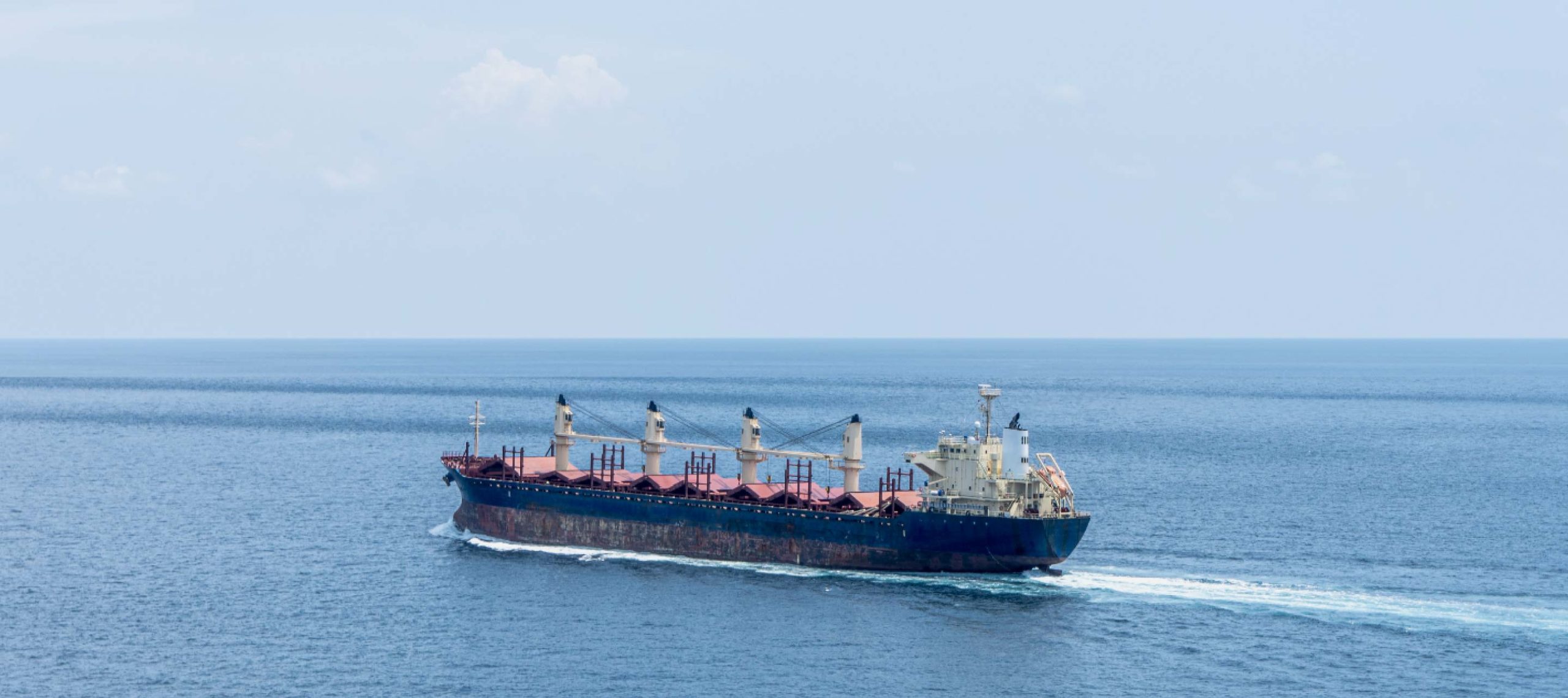
May 5, 2021

Nassia Katroutsou Learning Experience Consultant
3 Minute Read
In the world of maritime shipping, there are three major elements: vessels, cargo, and the contracts that determine how the two interact. When a vessel is needed to move cargo, it can be employed in several different ways.
A vessel can be employed on a (single) voyage basis, which means that the Charterers pay Freight to the Owner in order to perform their cargo transportation. Alternatively, a vessel can be employed on a Time Charter basis, which means that the vessel is hired by the Charterer for an agreed period of time against a payable hire rate to the Owner for the duration of the time charter period.
For the seasoned industry professional, these concepts are all too familiar. For the unfamiliar newcomer, the nuanced inner workings of the industry are strange and foreign. Regardless of your experience level, understanding and re-evaluating maritime shipping fundamentals, such as the elements of Time Charter, is crucial to better understanding your dynamic function and how it is changing within this ever-evolving industry .
In this blog post, we’ll review the elements of Time Charter and explore what factors impact the choice between Voyage and Time Charters.
Want to dive deeper into these fundamental concepts? Sign up for our free Elements of Time Charter course on Veson University!
Elements of Time Charter
A Time Charter (TC) is a type of vessel chartering and a vessel employment contract between two counterparties: the Owner and the Charterer . Each counterparty has different responsibilities and concerns, which are captured in the Charter Party Agreement .
Some key Time Charter contract terms to know are:
- the vessel’s description
- the time charter period
- the delivery and redelivery range
- the hire rate
- bunker consumption costs
The details of these contract variables have a profound impact on the nature of the agreement and the decisions that key stakeholders make.
For example, from the beginning of the time charter negotiations, the Owner must provide the Charterer with the vessel’s full description, commonly called “ Time Charter Description “. The detailed vessel’s description includes information such as the vessel’s speed and consumption rates, which are important for the Charterer to be aware of in order to accurately and efficiently plan the voyages which they need to perform during the Time Charter, and plan the cargo operations .
What Factors Impact the Choice Between Voyage and Time Charter?
This is a widely discussed topic and is one of the most common strategic decisions for both the Owners and Charterers. Some key factors affecting this decision making include market volatility , cargo availability , repositioning of the vessel , and financial reasons .
These factors create expectations from both parties, and these expectations are reflected in the market fluctuations and, essentially, on the freight rates. A low supply of vessels will result in higher freight rates, and low demand from the cargo side will result in lower freight rates. This is commonly called the spot market .
Counterparties’ perception of the market’s projection will be a very important factor in making a decision between voyage or TC. In this respect, and in an effort to avoid potential volatility or to control costs, the counterparties will consider fixing the vessel on a TC.
Another common business scenario is that a long TC may be part of a financial package with the purchase of the vessel. In other words, the financial and operational management of the fleet will impact this kind of decision.
Charterers who wish to take control of a vessel or a fleet to manage their own needs for cargo transportation and do not want to bear the purchase and running cost of the vessel will be in favor of the TC option. This means that the TC option is seen as a business opportunity with no asset burden for the Charterers.
Learning Industry Fundamentals with Veson University
At Veson Nautical, we believe in continuous learning, which is why we offer both product- and industry-based training opportunities based on our unique experience with over 300 diverse clients in the industry. A common technical and industry understanding across your team is critical to establishing shared priorities, foundational knowledge, and ultimate collaboration.
To provide a dynamic, deep-dive learning experience of what a Time Charter is about, we have created a Elements of Time Charter course offered through Veson University , which is the first of the three part series out of the Hire Management Basics course. Master the course for free now!
VESON UNIVERSITY COURSE
Elements of time charter course.
Start The Free Course
About the Author
Nassia is a member of Veson Education Services and designs learning content for Veson University. Having extensive experience with commercial maritime shipping and VIP project implementations, she is collaborating with SMEs to build unique learning experiences for Clients, Learners, and Veson employees. She is currently a Learning & Development member of CIPD.
Receive the latest from The Logbook, directly to your inbox.
You might also like....

Veson Interview: Navigating the Path to a Culture of Continuous Learning

6 Minute Read

3 Key Maritime Technology Questions: What Industry Professionals Shared at ONCOURSE 2023

5 Minute Read

Leveling Up Your System Knowledge: A Look at Veson’s Live Training Workshops


Looking for more helpful content?
Check out the Veson Resource Center.
Explore all resources
Privacy Overview

Vessel Chartering: A Comprehensive Guide to the Benefits and How to Charter a Vessel
Vessel chartering is the process of hiring a vessel for the transportation of goods. It is a vital part of the global shipping industry, as it allows for the efficient and cost-effective movement of commodities around the world.
Types of vessel charters
There are three main types of vessel charters:
- Voyage charter: A voyage charter is a contract for the carriage of a specific cargo from one port to another. The charterer pays the shipowner a freight rate per ton of cargo or a lump-sum amount for the entire voyage.
- Time charter: A time charter is a contract for the hire of a vessel for a specific period of time. The charterer pays the shipowner a daily hire rate and is responsible for the operating expenses of the vessel, such as fuel, crew wages, and maintenance.
- Demise charter: A demise charter is a contract that is similar to a time charter, but with the key difference that the charterer takes on full operational control of the vessel. This includes responsibility for the vessel’s crew, maintenance, and insurance.
Vessel chartering is a complex process that involves a number of different factors, such as the type of cargo being shipped, the size and type of vessel, the distance traveled, and the current market conditions.
Key benefits
Here are some of the key benefits of vessel chartering:
- Flexibility: Vessel chartering offers a high degree of flexibility for both shipowners and charterers. Shipowners can lock in freight rates for a specific period of time, while charterers can secure capacity for their shipments without having to invest in their own vessels.
- Cost-effectiveness: Vessel chartering can be a cost-effective way to transport goods, especially for large shipments. Charterers can often negotiate favorable rates with shipowners, and they can avoid the fixed costs associated with owning and operating their own vessels.
- Reliability: Vessel chartering is a reliable way to transport goods, as shipowners are contractually obligated to provide the agreed-upon service. This can be particularly important for charterers who need to meet strict delivery deadlines. (Discover the benefits of chartering a bulk carrier and its impact on international trade: “ Bulk Carrier Transport: The Backbone of Global Trade “)
Important notes
If you are considering chartering a vessel, there are a few things you should keep in mind:
- Choose the right type of charter: The type of charter you choose will depend on your specific needs. If you need to ship a specific cargo from one port to another, a voyage charter is likely the best option. If you need to hire a vessel for a longer period of time, a time charter or demise charter may be a better choice.
- Negotiate the right terms: It is important to carefully negotiate the terms of your charter contract. This includes the freight rate, loading and discharge ports, and the duration of the charter. You should also make sure that the contract includes provisions for dispute resolution and force majeure events.
- Work with a reputable broker: A reputable ship broker can help you to negotiate favorable terms and conditions for your charter contract. They can also help you to find a suitable vessel and to manage the chartering process.
Related Posts

VLCC Vessels Market Trends

AvexNav Prime Services
Leave a comment cancel reply.
Your email address will not be published. Required fields are marked *
Save my name, email, and website in this browser for the next time I comment.
AVEX NAV provides professional services on ship management, buying and selling of vessels and other specialized sea transport.
Quick Links
- Our Services
- Privacy Policy
Ship Categories
- CPP Tanker Ships
- DPP Tanker Ships
- Platinum Tower (Cluster I) Jumeirah Lakes Towers JLT office no 1401 P.O BOX 121746, Dubai, U.A.E
- +971501560074
- +971504609615
- [email protected]
- © 2023 Avexnav, All Rights Reserved.

Time Charter : Everything you need to know
- By MascotMaritime
- May 10, 2022
- 3 mins read

Table of Contents
What is time charter(t/c).
Time charter definition: It is a contract (time charter party) between the shipowner and the charterer wherein the shipowner agrees to let the charterer hire the vessel & its crew for a pre-defined period at an agreed amount payable by the charterer.
Who is a time charterer? What time charter party?
In a time charter, the person who charters the vessel is called the time charterer , the payment is called hire & the contract is called time charter party.
The hire rate is calculated differently, in $/DWT/month.
Time charter party pdf example:
Click here to see a sample of the time charter party (NYPE approved).
What are the significant parts of a time charter party?
Time chartering of a vessel refers to the hiring of the vessel and its crew for a pre-defined time period.
During the period of T/C, the shipowner is responsible for the employment of the crew, the navigational operation, maintenance(vessel/equipment) & maintaining the seaworthiness of the vessel.
The shipowner also guarantees various criteria of service like speed, consumption, etc.
The charterer is responsible for the commercial operation & covers separately the costs for fuels, port dues, and loading/unloading expenses.
Also, the charterer may be liable for damage caused to the vessel in connection with her use, other than the normal wear & tear.
When the vessel is under t/c, keeping the owner’s and charterer’s responsibilities & risk allocation in mind, the Master must play an in-between balanced role between the owner (his/her employer) & the charterer (principal).
The t/c determines a place & time for the delivery of the vessel from the owner to the charterer and redelivery of the vessel from the charterer to the owner.
The chartered vessel must be in conformity with the charter party with respect to the cargo-carrying capacity, speed, bunker consumption, and other agreed terms and conditions. Particularly, the cargo carrying capacity is important to the charterer.
In a time charter also, the ship must be delivered to the t/c not later than a certain date, and any delay beyond the canceling date entitles the charterer to cancel the charter. The voyages also must be carried out without delay.
If the vessel is delayed due to a breakdown of machinery or for other specified reasons, she may be off-hired, and then a reduction of the time may be made so that no hire will be paid during the off-hire period.
But under a t/c the owner, is not liable for delay not caused by the ship, hence the time lost because of adverse weather is the responsibility of the charterer.
During the time charter, the charterer has the freedom to use the vessel in whatever way, for example, for another charter to a third party.
Check out Common Shipping Terms & Chartering Terms .
What are the different types of time charters?
There is an immediate and period t/c, as well as a “bareboat” charter (in this case, the charterer additionally provides the crew).
Below are various types of the time charter.
- Trip time charter (TCT): A trip t/c is a short-term time charter where the vessel performs a single voyage between load port(s) and discharge port(s) and the charterer pays a fixed daily hire. The vessel is redelivered at a named place after completion of discharge.
- Round trip t/c: In this type of charter, the vessel is employed on a round trip basis & the delivery and redelivery of the vessel will take place in approximately the same area.
- Period t/c: In this type of charter, the vessel is employed within an agreed geographical area or on a worldwide basis with delivery/redelivery somewhere within the geographical area range. It may vary from several days to several years.
- Bareboat charter (demise charter): This is a contract between the shipowner and the charterer where the charterer takes the vessel on lease from the owner. The vessel is put under the disposal of the charterer without any crew. In this case, the charterer will have both commercial and technical responsibility for the vessel & will pay for maintenance, crew cost & insurance, etc.
What is the difference between a demise charter and a bareboat charter?
If the shipowner leases the ship with the ship owner’s crew members, it is called a demise charter . If the shipowner leases the ship without crew members, it is called a bareboat charter .
How the hire is payable?
The hire is payable in advance for a month or as agreed. If the hire is not paid promptly the owner may be entitled to cancel the charter.
When the advance payment of hire is to be made, the charterer often makes a deduction, if any, for off-hire during the previous period, any disbursement on the owner’s account & for any planned off-hire, like dry-docking period, etc.
For the last hire payment, the charterer will normally have claims against owners with respect to redelivery for bunkers remaining on board & governed by the “last hire payment” clause usually mentioned in the agreed time charter party.
See other featured articles: Voyage Charter : Definition & Full Detail
Related Popular Articles
Passive income streams for mariners.
Passive income streams for mariners can vary depending on individual circumstances, skills, and interests. Most mariners focus on honing their skills in navigation, safety, operating
Seafarers happiness on board – Key factors
Seafarers lead a challenging life, navigating the seas for extended periods, enduring isolation, facing unpredictable weather, and maintaining vessels. Their resilience and commitment ensure global

Problems faced by seafarers – Essential Insights for Sailors
Indeed, working at sea presents numerous challenges that demand both physical and mental resilience from seafarers. The maritime environment can be unforgiving, subjecting individuals to
6 Responses
- Pingback: INCOTERMS 2020 : A MUST READ FOR SHIPPING, CUSTOM & LOGISTIC PROFESSIONALS! - MascotMaritime
Das Zet Casino bietet seinen Spielern großzügige Boni und Aktionen an, um ihnen ein noch besseres Spielerlebnis zu ermöglichen. Einer dieser Boni ist der Zet Casino Bonus, der sowohl neuen als auch bestehenden Spielern zur Verfügung steht.
Bei der Registrierung im Zet Casino erhalten neue Spieler einen Willkommensbonus in Höhe von 100% bis zu 500€ sowie 200 Freispiele für ausgewählte Slots. Dieser Bonus sorgt für einen sofortigen Boost des Spielkontos und ermöglicht es den Spielern, ihre Lieblingsspiele mit zusätzlichem Guthaben zu genießen.
Aber auch bestehende Spieler kommen im Zet Casino nicht zu kurz. Das Casino bietet regelmäßig verschiedene Aktionen und Boni an, darunter Reload-Boni, Cashback-Angebote und Turniere mit attraktiven Preisen. Dadurch wird das Spielerlebnis im Zet Casino noch spannender und abwechslungsreicher.
Um von den verschiedenen Boni und Aktionen im Zet Casino zu profitieren, müssen die Spieler lediglich die entsprechenden Bonusbedingungen beachten. Diese können je nach Bonus variieren und beinhalten in der Regel Umsatzanforderungen, die erfüllt werden müssen, bevor eine Auszahlung möglich ist.
Insgesamt bietet das Zet Casino seinen Spielern mit seinen großzügigen Boni und Aktionen ein erstklassiges Spielerlebnis. Wer gerne in einem Online Casino spielt und auf der Suche nach attraktiven Boni ist, sollte das Zet Casino definitiv in Betracht ziehen.
Review my blog post https://zetcasino.one/
Boomerang Casino Einzahlungscode
Boomerang Casino ist eine beliebte Online-Glücksspielseite, die eine Vielzahl von spannenden Spielen und großzügigen Boni anbietet. Einer der aktuellen Angebote ist der Boomerang Casino Einzahlungscode, der es Spielern ermöglicht, zusätzliches Geld auf ihr Konto einzuzahlen und ihre Gewinnchancen zu erhöhen.
Der Boomerang Casino Einzahlungscode kann von neuen Spielern sowie bestehenden Mitgliedern genutzt werden. Um den Code zu aktivieren, müssen Spieler einfach bei ihrer Einzahlung den Code eingeben. Sobald der Code akzeptiert wurde, wird das zusätzliche Geld automatisch auf das Konto des Spielers gutgeschrieben.
Mit dem Boomerang Casino Einzahlungscode können Spieler ihr Spielvergnügen verlängern und mehr Spaß haben. Der zusätzliche Betrag kann für verschiedene Spiele im Casino verwendet werden, darunter Spielautomaten, Tischspiele, Live-Casino-Spiele und mehr.
Spieler haben dadurch die Möglichkeit, neue Spiele auszuprobieren und ihre Gewinnchancen zu maximieren.
Es ist jedoch wichtig zu beachten, dass der Boomerang Casino Einzahlungscode bestimmten Bedingungen unterliegt. Bevor Spieler das zusätzliche Geld abheben können, müssen sie bestimmte Umsatzanforderungen erfüllen. Diese Anforderungen variieren je nach dem Betrag des Bonus und den Bedingungen des Angebots.
Insgesamt bietet der Boomerang Casino Einzahlungscode den Spielern eine großartige Möglichkeit, ihr Spielerlebnis zu verbessern und mehr aus ihrem Glücksspiel herauszuholen. Es lohnt sich, regelmäßig nach neuen Codes zu suchen und sie zu nutzen, um die besten Angebote zu erhalten. Besuchen Sie noch heute Boomerang Casino und profitieren Sie von diesem aufregenden Bonusangebot!
Glücksspiel kann süchtig machen. Bitte spielen Sie verantwortungsbewusst.
Also visit my page … https://boomerangcasino.one/
This post presents clear idea for the new visitors of blogging, that actually how to do running a blog.
Tipico Casino ist eine beliebte Online-Spielplattform, die eine Vielzahl von Casinospielen anbietet. Um das Spielerlebnis noch spannender zu gestalten, bietet Tipico regelmäßig Bonuscodes an, die den Spielern zusätzliche Vorteile verschaffen können. In diesem Artikel werde ich erklären, wie man den Tipico Casino Bonus Code eingeben kann, um von den verschiedenen Aktionen zu profitieren.
Um einen Bonuscode bei Tipico Casino einzugeben, müssen Sie zunächst ein Konto auf der Website erstellen. Nach der Registrierung und Verifizierung Ihres Kontos können Sie sich in Ihr Spielerkonto einloggen. Dort finden Sie im Bereich “Mein Konto” einen Abschnitt für Bonusaktionen und Bonuscodes.
Um einen Bonuscode einzugeben, klicken Sie einfach auf die Schaltfläche “Bonuscode eingeben” und geben Sie den entsprechenden Code ein. Sobald der Code bestätigt wurde, wird der Bonus Ihrem Konto gutgeschrieben und Sie können diesen für verschiedene Spiele nutzen.
Es ist wichtig zu beachten, dass jeder Bonuscode bestimmte Bedingungen und Umsatzanforderungen hat, die Sie erfüllen müssen, bevor Sie Gewinne auszahlen lassen können. Diese Informationen finden Sie in den Bonusbedingungen, die Sie vor der Eingabe des Codes sorgfältig lesen sollten.
Zusätzlich zu den regelmäßigen Bonusaktionen bietet Tipico Casino auch einen Willkommensbonus für neue Spieler. Um diesen Bonus zu erhalten, müssen Sie bei Ihrer ersten Einzahlung den entsprechenden Bonuscode eingeben. Der Willkommensbonus variiert je nach Aktion und kann Freispiele, Bonusgeld oder andere Vorteile beinhalten.
Insgesamt bietet Tipico Casino eine Vielzahl von Bonuscodes und Aktionen, um das Spielerlebnis seiner Kunden zu verbessern. Indem Sie regelmäßig nach neuen Codes suchen und diese eingeben, können Sie zusätzliche Gewinne erzielen und Ihr Glück bei verschiedenen Spielen versuchen. Also verpassen Sie nicht die Gelegenheit, den Tipico Casino Bonuscode einzugeben und von den tollen Angeboten zu profitieren!
my blog … https://tipicocasino.one/
Oh my goodness! Awesome article dude! Many thanks, However I am having difficulties with your RSS. I don’t understand the reason why I can’t join it. Is there anyone else having similar RSS problems? Anyone who knows the solution can you kindly respond?
Leave a Reply Cancel reply
Your email address will not be published. Required fields are marked *
Save my name, email, and website in this browser for the next time I comment.
Terms & Conditions | Privacy Policy | Disclaimer
World Clock ×

- Market recognition
- Social responsibility
- Dispute resolution
Charter Parties: The Complete Guide – Types & Agreements
August 21, 2023
Looking for a comprehensive guide to charter parties? Our page covers all types and agreements, distinguishing us from the competition.
Charter Parties The Complete Guide
Charter parties , the legal contracts for chartering vessels, are the backbone of international shipping. They define the rights and obligations of shipowners and charterers, ensuring smooth operations on voyages. Whether it’s a time charter or a voyage charter, these agreements play a crucial role in facilitating global trade for carriers.

A charter party is not just any document; it serves a specific purpose in the context of chartering. Its clauses, articles, and provisions outline the terms that govern the relationship between parties involved in maritime commerce, typically in a contract. Shipowners carefully craft these agreements, known as charterparties, to protect their interests while meeting the needs of charterers who engage their services as carriers.
Understanding charter parties is essential for anyone venturing into international shipping. From specifying the duration of the charter period to determining responsibilities during loading and unloading, every detail matters in chartering. So let’s dive into this intricate world of maritime contracts and explore how they shape our interconnected global economy, specifically in relation to carrier and specific cargo.
Types of Charter Parties
Time charters.
A ship chartering, or time charter, involves leasing a vessel from a ship owner for a specific period. This type of charter party allows the charterer, or carrier, to have exclusive use and control over the vessel during the agreed-upon timeframe. It provides flexibility as the charterer can determine the ports of call and cargo carried.
Voyage charters
Voyage charters in ship chartering involve hiring a vessel for a single journey. Unlike time charters, which focus on an extended period, voyage charters are specific to one trip. The charterer pays the ship owner for transporting goods from one port to another without long-term possession or control over the carrier.
Bareboat charters
Bareboat charters involve ship chartering by leasing a vessel without crew or provisions. In this type of arrangement, the charterer assumes complete responsibility for operating and maintaining the ship during the agreed charter party duration. The shipowner transfers possession and control to the charterer, who becomes the carrier responsible for all aspects of navigation, crewing, and provisioning.
These main types of charter parties, including time charters, voyage charters, and bareboat charters, offer different options depending on the specific needs and requirements of the charterparty, carrier, ship owner, or shipowner. Time charters provide flexibility and extended use, voyage charters focus on individual trips, while bareboat charters grant full control to the lessee. By understanding these various types, individuals and businesses can choose which option best suits their particular circumstances.
Charter Party Agreements
Charter party agreements, also known as charterparty agreements, are legally binding documents that are negotiated between shipowners and charterers. These agreements specify important terms such as freight rates, laytime, demurrage, and more. Here’s a brief overview of charterparty agreements and how they form an essential part of container shipping.
- Charter party agreements, also known as charterparty agreements, are contracts that outline the terms and conditions of the chartering arrangement for container ships. They are typically negotiated between the shipowner, who owns the vessel, and the charterer, who will be using the container ship for a specific period or voyage.
- Charter party agreements include various provisions that define important aspects for ship owners. This includes details about freight rates (the cost of hiring the vessel), laytime (the allowed time for loading and unloading cargo), demurrage (additional fees if there is a delay in cargo operations), and other relevant terms.
- Legally binding documents: Once both ship owners agree to the terms outlined in a charter party agreement, it becomes a legally binding document. This means that both ship owners are obligated to fulfill their respective responsibilities as stated in the agreement.
Charter party agreements play a crucial role in the shipping industry by providing clarity and protection for all parties involved. They ensure that both shipowners and charterers understand their rights and obligations throughout the duration of the charter. Whether it’s a slot charter (a partial space booking) or a demise charter (complete transfer of vessel control), these agreements establish clear guidelines for smooth operations.
The Importance of Charter Parties in International Trade
Charter parties play a vital role in facilitating global trade, ensuring the efficient transportation of goods by sea. These agreements establish clear responsibilities and liabilities for both shipowners and charterers, promoting smooth operations and minimizing disputes. Let’s explore why charter parties are crucial in international trade.
- Facilitate global trade by providing vessel availability : Charter parties enable shipowners to make their vessels available for hire, allowing them to meet the demand for transporting goods across borders. This availability ensures that businesses can access reliable shipping services to move their products worldwide.
- Ensure efficient transportation of goods by sea: By defining the terms and conditions of carriage, charter parties help streamline the logistics process for ship owners. They specify loading and unloading procedures, delivery timelines, and any additional requirements for cargo handling. This clarity promotes efficiency and helps avoid delays or misunderstandings during transit, benefiting both shipowners and the overall shipping industry.
- Establish clear responsibilities and liabilities: Charter parties outline the obligations of both shipowners and charterers, ensuring accountability throughout the voyage. They determine who is responsible for vessel maintenance, crew expenses, insurance coverage, and compliance with maritime regulations. Clearly defined responsibilities minimize uncertainties and protect all parties involved.
Charter Parties and Bills of Lading
A bill of lading issued under charter party terms serves as a crucial document for shipowners in the shipping industry. It provides evidence of cargo receipt and condition, making it essential for transferability and financing.
- Under voyage charters or bareboat charters, a bill of lading is often issued to acknowledge the receipt of specific cargo by the shipowner or charterer.
- This document is essential for shipowners and charterers in the shipping industry as it serves as proof that the cargo has been loaded onto the ship and is in good condition. It is particularly important for both bareboat charter and voyage charter party agreements during the specified charter period.
- Charter parties facilitate the agreement between the shipowner (or bareboat charterer) and the charterer, outlining their respective rights and responsibilities.
- The bill of lading acts as a contract between the carrier (shipowner) and the shipper (charterer), ensuring that both parties fulfill their obligations.
- For freight forwarders, having a bill of lading issued under charter party terms allows them to confidently arrange transportation for their clients’ cargo with the ship owner’s assurance.
- The bill of lading also enables financing options for shippers who may need to use it as collateral or provide proof of ownership for obtaining loans during a bareboat charter, slot charter, or voyage charter party within the charter period.
- In addition to its importance in commercial transactions, bills of lading issued under charter parties serve as critical documents for ship owners’ insurance claims related to damaged or lost cargo.
Charter parties and bills of lading are integral components within the shipping industry. They ensure smooth operations, protect stakeholders’ interests, and provide necessary documentation for various purposes.
Ship Speed and Fuel Consumption in Time Charter
Ship speed plays a crucial role in determining fuel consumption within time charter agreements. The rate at which a vessel travels directly impacts the amount of fuel it consumes during its journey. Here are some key points to consider:
- Slow steaming: Slowing down the ship’s speed can significantly reduce fuel costs. By adopting this practice, charter parties can achieve substantial savings. However, it is important to note that slow steaming also extends the duration of the voyage.
- Cost versus time: When deciding on ship speed, charter parties must strike a balance between cost reduction and voyage duration. While slower speeds may result in lower fuel consumption, they can lead to longer transit times, affecting overall efficiency and profitability.
- Fuel efficiency considerations: In time charter agreements, fuel efficiency is a critical factor that influences financial outcomes. Parties involved must carefully evaluate the impact of ship speed on fuel consumption to ensure optimal profitability.
By considering these factors, charter parties can make informed decisions regarding ship speed and its effect on fuel consumption within time charter agreements. Achieving the right balance between cost reduction and voyage duration is essential for maximizing profitability while maintaining operational efficiency.
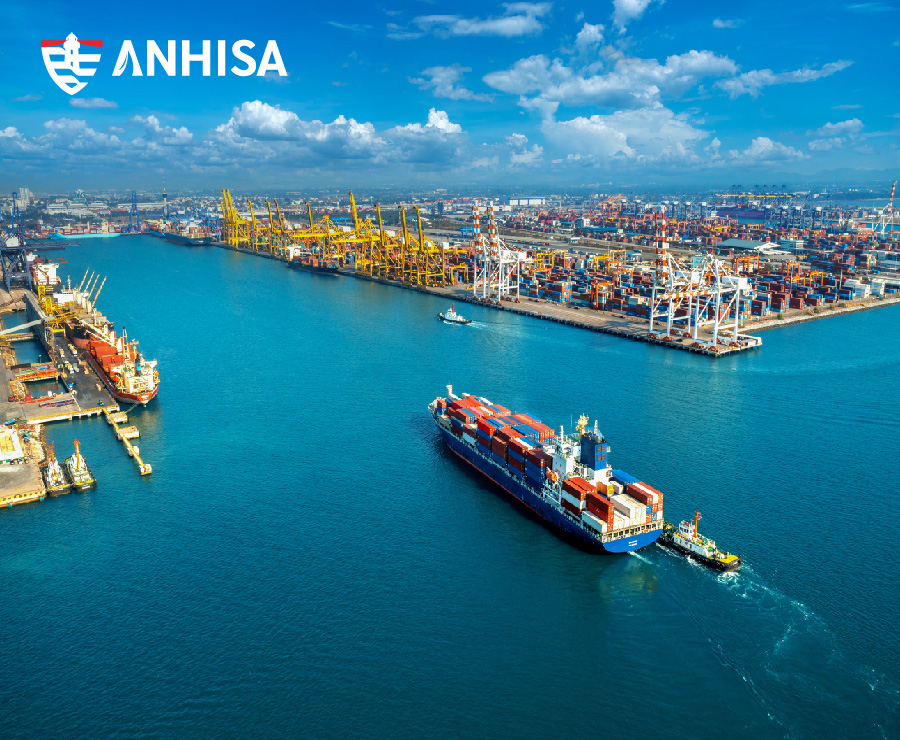
Understanding Laytime and Total Laytime
Laytime, a crucial aspect of charter parties for ship owners, refers to the time allowed for loading/unloading cargo. It determines the financial implications for both ship owners and other parties involved. Exceeding the laytime incurs demurrage charges, resulting in additional costs for ship owners.
Key points to understand about laytime and total laytime:
- Laytime : Laytime is the agreed-upon period during which the charterer has the right to load or unload cargo. It is typically expressed in days, hours, or even minutes. The clock starts ticking once the vessel arrives at the designated port or berth.
- Demurrage : When laytime is exceeded due to delays caused by either party, demurrage charges come into play. Demurrage refers to the money the charterer paid to compensate for the extra time taken beyond the agreed-upon laytime. This ensures that shipowners are compensated for any lost time and potential revenue.
- Financial Implications : Understanding laytime is essential because it directly impacts both parties’ financial interests. For shipowners, shorter laytimes result in quicker turnaround times and increased efficiency. On the other hand, charterers aim to maximize their use of laytime while avoiding demurrage costs.
By comprehending these concepts related to laytime and total laytime, ship owners and other parties involved in charter parties can effectively manage their operations while minimizing potential financial risks.
Remember: Promptly completing loading or unloading operations within the agreed-upon timeframe helps avoid unnecessary expenses and contributes to smoother logistics processes for all stakeholders involved in the ship charter, slot charter, voyage charter party, and charter party chain.
Safe Port Requirements in Voyage and Time Charters
Voyage charters require the charterer to transport cargo from one port to another by ship. In these agreements, it is crucial for the charterer to ensure that the chosen ports for cargo operations meet certain safety requirements. Similarly, time charters impose an obligation on the charterer to nominate safe ports throughout the duration of the agreement.
The selection of a safe port is crucial for ships due to the potential risks involved. Safety concerns encompass navigational hazards, ship security measures, and infrastructure conditions. By considering these factors, charter parties can mitigate dangers and ensure smooth ship operations.
Here are some key points regarding safe port requirements for ships in both voyage and time charters.
- Charterers must carefully evaluate the safety aspects of each port before initiating cargo operations on their ship.
- When entering a voyage charter party, it is essential to consider navigational hazards such as shallow waters, narrow channels, or unpredictable weather conditions that may be encountered during the ship’s journey.
- Security measures at ports are crucial in safeguarding cargo, whether on a ship or on land, from theft or any other criminal activities.
- The responsibility to nominate safe ship ports lies with the charterer throughout the duration of the contract.
- It is essential for charterers to stay updated on any changes in safety conditions at nominated ports to ensure their ships’ safety.
- Regular communication between all parties involved in the ship ensures that any safety concerns related to the ship are promptly addressed.
Key Takeaways on Charter Parties
Charter parties are critical legal instruments in the maritime industry. They establish rights, obligations, and liabilities between parties involved in international shipping. Here are some key aspects to consider:
- Lesson: Charter parties serve as a vital framework that ensures smooth operations within the maritime sector.
- Aspects: These agreements cover various aspects, including vessel specifications, cargo details, and the duration of the charter.
- News: Staying informed about recent developments and changes in charter party regulations is crucial for all parties involved.
- Details: The terms and conditions outlined in charter parties provide specific details regarding payment terms, insurance requirements, and dispute resolution mechanisms.
- Act: Charter parties act as binding contracts that protect the interests of both shipowners and charterers.
- Fortior: By clearly defining responsibilities and obligations, these agreements fortify relationships between shipowners, charterers, and other stakeholders.
Charter parties play an instrumental role in facilitating international trade by ensuring the efficient transportation of goods across borders. As these agreements govern vital aspects of maritime operations, it is essential for all parties to familiarize themselves with their provisions. Understanding the intricacies of charter parties can help mitigate potential disputes while fostering mutually beneficial relationships within the global shipping community.
Real-world Challenges with Charter Party Disputes
Legal professionals play a crucial role in resolving charter party disputes, which can be complex and challenging. These disputes often arise from breaches of the terms outlined in the charter party agreement. Arbitration is frequently employed as an alternative to court proceedings to settle such disagreements.
The involvement of legal professionals is essential due to the intricate nature of charter party disputes . Breaches of contract terms can lead to various issues, including financial costs, risks, and responsibilities for both parties involved. Here are some examples that highlight the complexities faced in this industry:
- Maintenance Responsibility: Disagreements may arise.
- Demise Charter Issues: A demise charter involves transferring full control and possession of a vessel to another party. However, conflicts may occur regarding the condition or performance of the vessel during this arrangement.
- Country-Specific Practices: Different countries have their own regulations and practices concerning charter parties, leading to potential clashes between international parties.
Arbitration is commonly utilized to settle these disputes outside of traditional court processes. This alternative dispute resolution practice offers several advantages:
- Confidentiality: Arbitration provides a more private setting compared to court hearings.
- Expertise: Parties involved can select arbitrators with specialized maritime law knowledge or specific aspects of their cases.
- Flexibility: The arbitration process allows for tailor-made procedures that suit the unique circumstances of each dispute.
At ANHISA, we have established ourselves as trusted lawyers and counsels for shipowners and charterers involved in charter party disputes. Our extensive experience in practical cases has allowed us to successfully advise and resolve complex situations, such as indemnification requests by shipowners due to early termination breaches.
We understand the importance of finding amicable solutions that benefit all parties involved. However, when negotiations fail, our team at ANHISA is well-equipped to guide shipowners through the arbitration process, ensuring their claims are properly represented.
Our expertise goes beyond shipping knowledge; we possess the technical know-how and strategic insights required to meet our clients’ expectations. With a strong foundation in shipping practice and a track record of working with international and local clients, we are committed to providing efficient, reliable, and personalized service for all your charter party disputes.
If you require assistance in resolving any charter party dispute, do not hesitate to reach out to us for a consultation. We are here to help.
Contact us via:
- Mr. Dang Viet Anh
- Email: [email protected]
- T: +84 28 5416 5873
- M: +84 983 467070
Q1: How can ANHISA assist with charter party disputes?
At ANHISA, we offer comprehensive legal counsel and guidance throughout the process of resolving charter party disputes. From negotiation strategies to arbitration representation, we ensure that our clients’ interests are protected.
Q2: What sets ANHISA apart from other law firms?
ANHISA’s unique advantage lies in our deep-rooted expertise in shipping practice combined with years of experience working with international and local clients. Our team possesses the technical knowledge and insights necessary to navigate complex charter party disputes effectively.
Q3: Can ANHISA help with both voyage and time charter disputes?
Yes, our expertise covers both voyage and time charter disputes. Regardless of the type of charter party involved, we have the knowledge and experience to provide tailored solutions for our clients.
Q4: How long does resolving a charter party dispute typically take?
The duration of resolving a charter party dispute can vary depending on the case’s complexity and the parties’ willingness to reach a settlement. At ANHISA, we strive to expedite the process while ensuring thorough representation for our clients.
Related posts

Ship Arrest in Vietnam? ANHISA – Your Trusted Legal Services
April 02, 2024
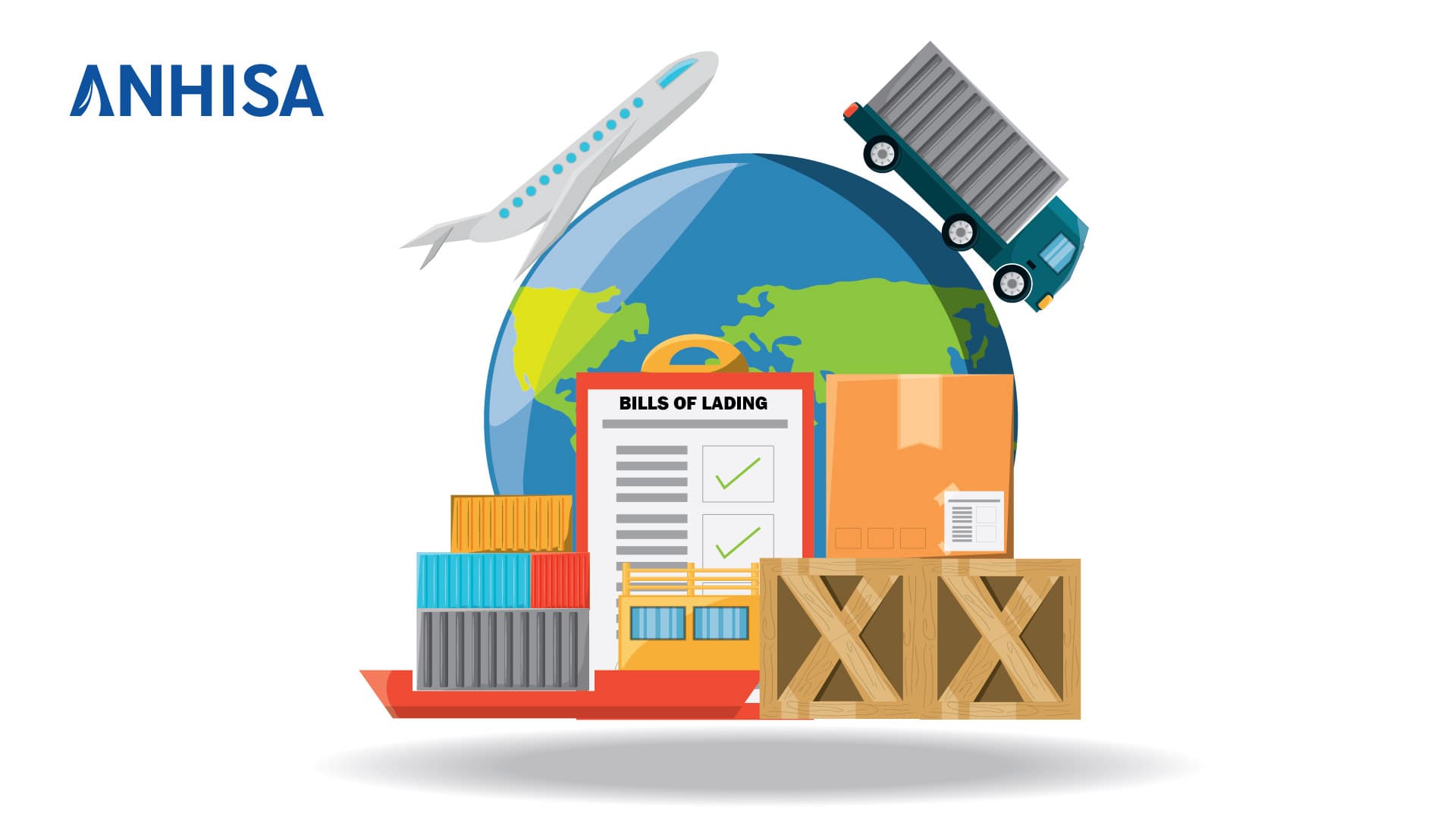
Bills of Lading: Importance for International Shipping
March 19, 2024

Mediators’ Role in Alternative Dispute Resolution (ADR)
March 13, 2024

What is Alternative Dispute Resolution (ADR) – ANHISA International Law Firm
March 03, 2024
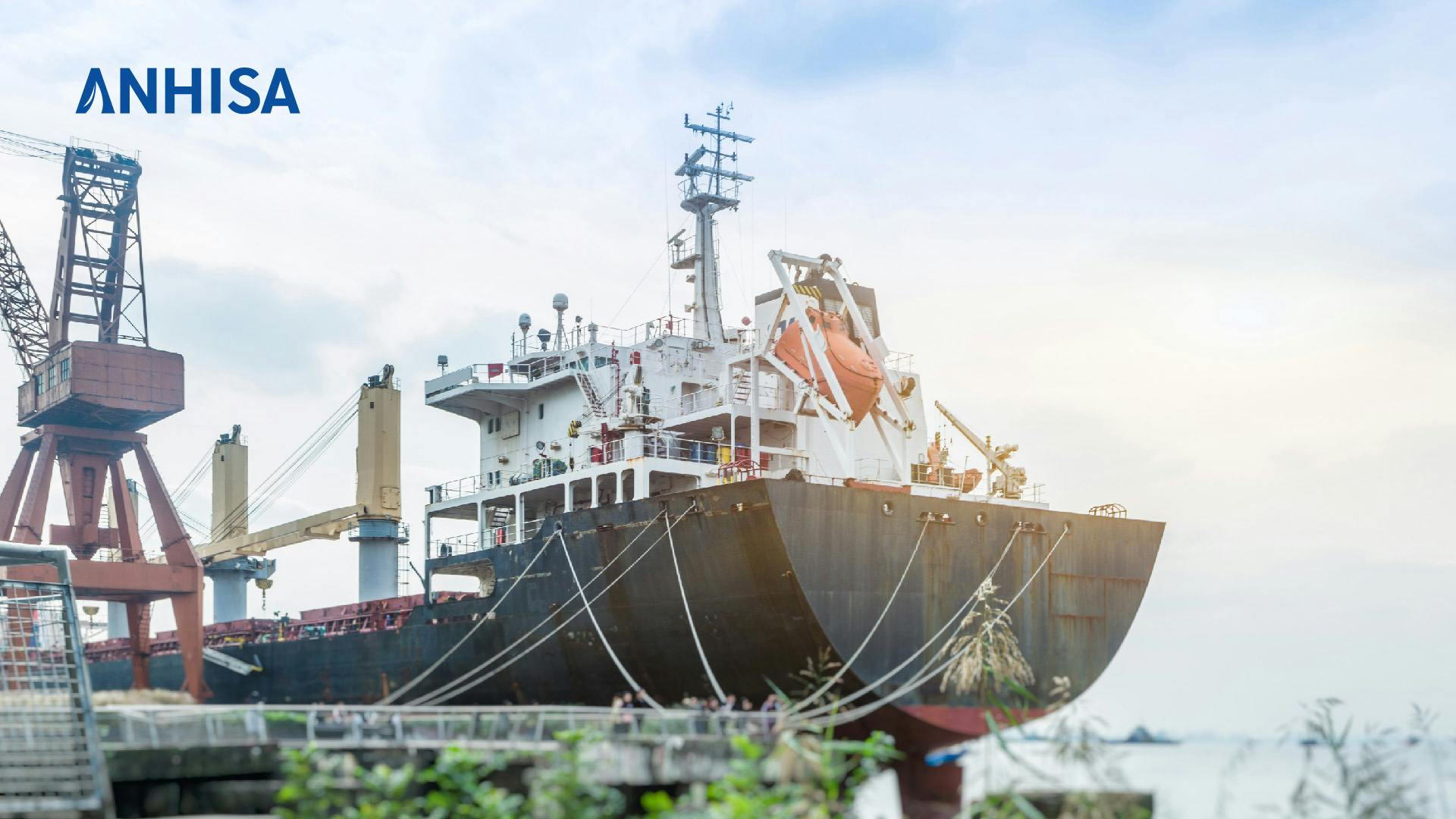
Arrest and Release in Shipping: What You Need to Know
February 28, 2024
- [email protected]
- [email protected]
- Hanoi Office: +84 24 320 47609
- Saigon Office: +84 28 5416 5873
- +84 (0) 939 117 398
- +84 (0) 983 488 380
© 2022 Anhisa LLC
- Ship Charter Rates
- Ship Bunker
- Chartering News
- Chartering Lessons

Pros and Cons of Voyage Charter

Voyage Charter Pros
Voyage Charter provides a flexible means by which a ship can be provided for the carriage of a specific cargo between two specific ports. To this extent it will provide cover for a cargo interest’s short-term requirement to move cargo from X to Y.
Additionally, a shipowner can provide short-term employment for the ship by engaging them on voyage charters.
Many shipowners operating fleets of ships will employ ships in this way in order to balance their portfolio of work. A number of ships from the fleet will be operated on long-term time charters to provide a steady income stream for the shipowners.
The remaining proportion of the fleet will be employed on Voyage Charters in order to allow the shipowners to benefit from fluctuations in the market price for ships caused by shortages of ships.
In this way Voyage Charters provide a flexible solution to the intrinsically variable demands of shipping.
A voyage charter is a type of charter party in the shipping industry where a shipowner agrees to transport a specific quantity of cargo for a set price from one or more ports to one or more destinations. Like any contractual arrangement, voyage charters come with their own set of advantages and disadvantages:
Pros of Voyage Charter
- Defined Costs for Charterers : In a voyage charter, the cost of transporting goods is agreed upon in advance. This allows the charterer to know the exact cost of transportation, aiding in budgeting and financial planning.
- No Ship Operating Costs for Charterers : The shipowner bears all the operating costs of the ship, including fuel, crew, maintenance, and insurance. This is beneficial for the charterer as they are not exposed to these variable expenses.
- Efficiency in Cargo Transportation : Voyage charters are often the most efficient way to transport large quantities of cargo over long distances, making them ideal for bulk and commodity shipments.
- Flexibility in Cargo Handling : The charterer has some flexibility in specifying loading and unloading procedures, which can be tailored to the nature of the cargo.
- Market Opportunities for Shipowners : Voyage charters allow shipowners to capitalize on favorable market conditions, setting higher freight rates when demand is high.
- No Long-Term Commitment for Charterers : Voyage charters are typically for a single voyage, offering charterers flexibility without the need for a long-term commitment, as opposed to time charters which can last for several months or years.
- Market Insight for Shipowners : Engaging in various voyage charters can provide shipowners with valuable insights into different cargo markets and trade routes, which can inform future business decisions.
- Profit Maximization for Shipowners in High-Demand Periods : During periods of high demand, shipowners can capitalize by negotiating higher freight rates, maximizing their profit potential.
Cons of Voyage Charter
- Market Risk for Shipowners : The shipowner bears the risk of fluctuating market conditions. If the market rate for freight falls below the agreed-upon charter rate, the shipowner cannot benefit from the lower prices.
- Risk of Delays for Shipowners : The shipowner is exposed to the risk of delays due to loading and unloading operations, bad weather, or port congestion, which can increase operational costs.
- Limited Flexibility for Shipowners : Once a voyage charter is agreed upon, the shipowner has limited flexibility in employing the ship for other opportunities until the charter is completed.
- Potential for Cargo-Specific Issues for Charterers : If the cargo requires special handling or is subject to market fluctuations, the charterer might face challenges in timing and cargo readiness.
- Demurrage and Dispatch : If the loading or unloading takes longer than agreed (laytime), the charterer is typically liable to pay demurrage charges. Conversely, if operations are completed in less time, the charterer may receive dispatch money, but this is less common.
- Dependency on Ship’s Performance : The charterer’s operations are heavily dependent on the ship’s performance and punctuality, which they do not control.
- Operational Restrictions for Charterers : The charterer has limited control over the operational aspects of the ship, such as speed and route, which can impact the timing and efficiency of the cargo delivery.
- Risk of Freight Rate Fluctuations for Charterers : If the market freight rate falls after entering into a voyage charter, the charterer may end up paying more than the current market rate for the transportation.
- Potential Liability for Cargo Damage : In some cases, the charterer might be responsible for any damage to the cargo during loading or unloading operations, which could incur additional costs.
- Bunker Fuel Price Variability for Shipowners : The cost of bunker fuel, which is a significant operational expense, can fluctuate, impacting the profitability of the voyage for the shipowner, especially if not properly hedged or accounted for in the charter party agreement.
- Administrative and Coordination Efforts : Voyage charters often require significant administrative and coordination efforts, including contract negotiation, cargo scheduling, and liaison with port authorities.
- No Guarantee of Future Business : For shipowners, each voyage charter is a standalone agreement, which means there is no guarantee of continuous business once a voyage is completed.
While voyage charters offer a clear and straightforward way to transport goods, they also carry specific risks and limitations for both shipowners and charterers. The choice between a voyage charter and other types of charters, like time or bareboat charters, depends on the specific needs, risk tolerance, and operational preferences of the parties involved.
What are the benefits of Voyage Charter?
The benefits of a voyage charter, where a shipowner agrees to transport a specified amount of cargo for a charterer from one point to another for a predetermined rate, are numerous for both parties involved. Here are some key benefits:
Benefits for the Charterer
- Predictable Costs : The cost of transportation is fixed and agreed upon in advance, allowing the charterer to budget transportation expenses accurately.
- No Operating Costs : The charterer is not responsible for the operating costs of the ship, such as fuel, crew, and maintenance. This reduces financial risk and administrative burden.
- Suitable for Single or Occasional Shipments : Voyage charters are ideal for businesses that do not require regular shipments, offering a flexible and cost-effective solution for occasional transport needs.
- Flexibility in Cargo Management : Charterers can specify loading and unloading procedures to suit their cargo, ensuring optimal handling and safety.
- Reduced Liability : The charterer’s liability is generally limited to the cargo and operations at the port, reducing broader operational risks.
Benefits for the Shipowner
- Profit Opportunities : During periods of high demand, shipowners can negotiate favorable freight rates, maximizing their earnings.
- Market Exposure : Engaging in various voyage charters exposes shipowners to different markets and cargo types, diversifying their business experience and opportunities.
- Utilization of Ship : Voyage charters allow for the effective utilization of the ship, ensuring it generates income rather than remaining idle.
- Control Over Ship Operations : Shipowners retain control over the operation and navigation of the ship, allowing them to manage their fleet efficiently.
- Flexibility in Fleet Management : After the completion of a voyage charter, the shipowner is free to engage the ship in other charters or operations, maintaining flexibility in fleet management.
General Benefits
- Simplicity : Voyage charters are often straightforward and easier to negotiate and manage compared to more complex chartering arrangements like time charters.
- Clear Terms : The contract terms, including the freight rate, ports of loading and discharge, and laytime, are clearly defined, reducing the potential for disputes.
- Market Insights : For both parties, engaging in voyage charters can provide valuable insights into market trends, rates, and operational best practices.
Voyage Charters offer financial predictability and operational flexibility, making them an attractive option for both charterers and shipowners. The specific benefits can vary based on the nature of the cargo, market conditions, and the strategic objectives of the parties involved.
What are the advantages of Time Charter?
A time charter is a type of chartering agreement in the shipping industry where a charterer rents a ship for a specified period of time, with the shipowner still responsible for the ship’s operation and maintenance. This arrangement offers several advantages for both the charterer and the shipowner:
Advantages for the Charterer
- Operational Control : The charterer gains operational control over the ship for the charter period, including deciding the routes and cargoes, which offers greater flexibility in logistics and trade opportunities.
- Fixed Hire Rate : The charterer pays a fixed daily or monthly hire rate, making budgeting and financial planning more predictable.
- No Long-Term Capital Commitment : Charterers can secure the use of a ship without the capital investment required to purchase a ship, optimizing their capital allocation.
- Adaptability to Market Conditions : Time charters allow charterers to respond quickly to market changes by repositioning ships to more profitable routes or cargoes.
- Reduced Risk : Since the shipowner is responsible for the ship’s operation and maintenance, the charterer has reduced exposure to operational risks.
- Efficiency in Cargo Operations : Time charters are efficient for businesses with regular shipping needs, avoiding the need to negotiate separate voyage charters for each shipment.
Advantages for the Shipowner
- Stable Income : Time charters provide a steady, predictable income over the charter period, which can help in financial planning and securing loans.
- Reduced Marketing Effort : The shipowner doesn’t need to find new cargoes for each trip, as the charterer is responsible for cargo arrangements.
- Utilization of Fleet : Time charters help ensure that the ship is actively employed for a longer duration, reducing idle time.
- Operational Oversight : The shipowner retains control over the crew and the technical management of the ship, ensuring that standards are maintained.
- Flexibility in Fleet Management : After the expiration of the charter, the shipowner can reposition the ship for other opportunities, including other time charters or spot market voyages.
General Advantages
- Risk Distribution : Risks are distributed between the shipowner and the charterer, with each party bearing the risks associated with their responsibilities.
- Market Adaptability : Both parties can benefit from the flexibility to adapt to market conditions – the charterer through operational control and the shipowner through stable, long-term contracts.
- Long-Term Relationships : Time charters often foster long-term business relationships between shipowners and charterers, leading to future business opportunities.
Time Charters offer a balance of benefits for both parties, providing operational flexibility and market adaptability for charterers, and financial stability and reduced marketing efforts for shipowners. This makes them an attractive option for businesses with regular shipping needs and shipowners seeking stable, long-term engagements.
Why do Shipowners prefer Voyage Charter over Time Charter?
Shipowners may prefer voyage charters over time charters for several reasons, each linked to the specific characteristics of voyage charters and the strategic and financial priorities of the shipowner. Here are some of the key reasons:
- Higher Potential Profit in Favorable Markets : In a strong freight market, voyage charters can offer higher earning potential per voyage compared to the steady, but possibly lower, daily rates of time charters. This is particularly true when freight rates are rising, as shipowners can capitalize on higher market rates.
- Control Over Ship Operations : In a voyage charter, the shipowner retains control over the ship’s operation, including navigation and management. This allows them to maintain their operational standards and practices, which can be important for maintaining the ship’s condition and performance.
- Flexibility in Market Engagement : Voyage charters offer the flexibility to engage the ship in different markets and trade routes. After the completion of a voyage, the shipowner can reassess the market and choose the next charter based on the most favorable conditions, without being tied to a long-term commitment.
- No Dependency on Charterer’s Cargo Operations : In a time charter, the ship’s profitability is linked to the charterer’s ability to find and manage cargo effectively. In a voyage charter, the shipowner is not dependent on the charterer’s cargo operations, reducing the risk of inefficiencies or delays caused by the charterer.
- Risk of Market Downturn : While voyage charters expose shipowners to market fluctuations, some owners might prefer this over locking in a potentially lower long-term rate in a time charter, especially if they anticipate an upturn in the market.
- Reduced Credit Risk : Voyage charters typically involve shorter engagements with charterers and quicker payment terms. This reduces the credit risk associated with the charterer compared to longer time charter commitments.
- Easier Budgeting for Operational Costs : Since the shipowner is responsible for the ship’s operating costs in a voyage charter, they can more directly control and budget these expenses, as opposed to relying on the charterer’s management in a time charter.
- Lump Sum Payments : Some voyage charters involve lump-sum payments, which can be advantageous for cash flow management for the shipowner.
- Market Insights : Engaging in different voyage charters provides valuable insights into various cargo markets and trade routes, which can inform future business strategies.
However, it’s important to note that the preference for voyage charters over time charters can vary depending on the shipowner’s business model, risk tolerance, market conditions, and specific operational preferences. While some owners prefer the potential higher earnings and control of voyage charters, others might favor the stability and predictability of revenue from time charters.
Why do Charterers prefer Voyage Charter over Time Charter?
Charterers may prefer voyage charters over time charters for several reasons, mostly related to the specific benefits and characteristics of voyage charters that align with the charterers’ logistical needs, financial objectives, and risk management strategies. Here are some key reasons for this preference:
- Cost Predictability : In a voyage charter, the cost of transporting goods is fixed and agreed upon in advance. This allows charterers to know the exact cost of transportation, aiding in budgeting and financial planning.
- No Operational Responsibilities : The charterer is not responsible for the ship’s operational costs and management in a voyage charter. This includes crew wages, ship maintenance, and insurance, reducing the administrative burden and operational risks for the charterer.
- Ideal for Single or Specific Shipments : Voyage charters are particularly suitable for businesses that do not have regular shipping needs but require transportation for specific, occasional shipments.
- Reduced Capital Commitment : Since voyage charters are typically for single voyages, they require less commitment of financial resources compared to the potentially longer-term and more costly time charters.
- Avoidance of Market Fluctuations : Charterers are not exposed to fluctuations in charter rates once the voyage charter rate is agreed upon. This can be particularly advantageous in volatile markets.
- Flexibility in Cargo Handling : Charterers can have more say in specifying loading and unloading procedures in voyage charters, ensuring that these operations are tailored to the nature of the cargo.
- No Risk of Ship Underperformance : In voyage charters, the charterer is not affected by the risk of ship underperformance in terms of speed and fuel consumption, as these aspects are the shipowner’s responsibility.
- Simplicity and Convenience : Voyage charters are often more straightforward and easier to arrange and manage compared to the more complex and ongoing commitments of time charters.
- Less Liability for the Ship : The charterer’s liability is usually limited to the cargo and the operations at the port, and does not extend to the broader operations and maintenance of the ship.
- Suitable for Specific Trade Routes or Cargoes : For businesses that deal with specific trade routes or specialized cargoes, voyage charters offer the precision and customization needed for such operations.
The preference for voyage charters by charterers is largely driven by the cost predictability, reduced operational responsibilities, and suitability for specific or occasional shipping needs. However, the choice between voyage and time charters ultimately depends on the specific requirements, financial considerations, and risk appetite of the charterer.
What is the difference between Time Charter and Voyage Charter?
Time charter and voyage charter are two principal types of charter parties used in the shipping industry, and they differ significantly in terms of structure, responsibilities, and financial arrangements. Here’s a comparative overview:
Time Charter
- Duration-Based Agreement : In a time charter, the ship is chartered for a specific period. The charterer pays for the hire of the ship over this period, regardless of the number of voyages made.
- Charterer’s Control and Flexibility : The charterer has greater control over the ship’s operation, including its routes and cargoes, within the agreed limits of the charter.
- Shipowner’s Responsibilities : The shipowner is responsible for the ship’s operation and maintenance, including crewing, insurance, and repairs.
- Payment Structure : Payment is made on a per-day basis (hire rate), and the charterer is responsible for the fuel costs (bunker) and port charges.
- Risk Distribution : The charterer bears the commercial risks (such as cargo delays), while the shipowner bears the operational risks (such as mechanical failures).
Voyage Charter
- Trip-Specific Agreement : In a voyage charter, the agreement is for a specific voyage or series of voyages. The ship is chartered for the transportation of cargo from one or more load ports to one or more discharge ports.
- Shipowner’s Control : The shipowner controls the ship’s operation, including its navigation and management.
- Fixed Freight Rate : The charterer pays a lump sum or a rate per ton for the cargo transported. This rate is fixed regardless of the voyage duration.
- Shipowner’s Expenses : The shipowner pays for the ship’s operating costs, including fuel, crew, and maintenance.
- Risk Distribution : The shipowner bears most risks, including voyage duration and operational costs, while the charterer is primarily responsible for loading and unloading the cargo within the agreed laytime.
Key Differences
- Control and Flexibility : In a time charter, the charterer has more control and flexibility in employing the ship, while in a voyage charter, the shipowner has more control over the ship’s operation.
- Payment Structure : Time charters involve a day-rate payment model, while voyage charters involve payment based on cargo quantity or a lump sum for the journey.
- Duration of Agreement : Time charters are for a set period, whereas voyage charters are for one or more specific voyages.
- Risk and Responsibility : In time charters, operational responsibilities and some risks are with the shipowner, while commercial risks are with the charterer. In voyage charters, the shipowner assumes most of the operational and voyage risks.
Choosing between a time charter and a voyage charter depends on factors like the charterer’s need for flexibility, the duration of the requirement, cost considerations, and risk appetite. Each type offers different advantages and suits different shipping needs.
We kindly suggest to read more about Voyage Charter Vs Time Charter www.handybulk.com
HEADQUARTERS
HandyBulk LLC Oceania Business Plaza Tower 2000 Street Punta Colon 43th Floor Panama City, Panama
Contact Form
Bulk manganese ore shipping, institute of chartered shipbrokers (ics), charterparty cancellation.
- Perspectives >
- Shipping & International Trade >
What's in a name? Time Charter Trips explored
25 April 2016
The time charter trip or "TCT" is a common hybrid, with attributes of both time and voyage charters.
The charter is typically for a certain trip or voyage, as with a voyage charter, but hire is payable (not freight), as with a time charter. However, the freedom of the TCT charterer to direct the Vessel has long been a matter of dispute [FN1].
In The "WEHR TRAVE" [FN2], the English Commercial Court examined the limits to the TCT charterers' powers, and in particular whether TCT charterers could load a fresh cargo once the initial cargo loaded on board the vessel had been fully discharged.
SBT Star Bulk & Tankers as Owners chartered their Vessel, the "WEHR TRAVE" to Cosmotrade as Charterers for a time charter trip. The charterparty was on an amended NYPE 1946 form and provided (inter alia) :
"… That the said Owners agree to let, and the said Charterers agree to hire the said vessel, from the time of delivery, for one Time Charter trip via good and safe ports and/or berths via East Mediterranean/Black Sea to Red Sea/Persian Gulf/India/Far East always via Gulf of Aden, with steels and/or other lawful/harmless general cargo, suitable for carriage in a cellular container vessel as described. No bulk cargo is allowed. Duration minimum 40 days without guarantee within below mentioned trading limits ."
The Vessel loaded cargoes at three ports and discharged at five ports, the last of which was Dammam.
Disputes arose when Charterers gave an order for the (empty) vessel to load another cargo at Sohar in Oman for discharge in India.
Owners refused to comply, on the basis they had contracted for a "one Time Charter trip" only. Owners argued that Charterers' order was illegitimate, and that after discharge at Dammam the Vessel could only legitimately proceed to the redelivery range under the Charterparty.
The parties proceeded to arbitration, where the Tribunal held (as a preliminary issue) that Charterers' order to load a further cargo was permitted under the Charterparty. Consequently, Owners were in breach of Charterparty for failure to comply with the order.
Owners appealed under s.69 of the Arbitration Act 1996 to the High Court.
High Court Judgment
The Court restated the position that the basic "underlying notion" of a TCT is that the vessel will generally be under the orders and directions of the charterer, in accordance with clause 8 of the NYPE form.
The parties were free to deviate from this basic principle, but to do so would require agreement and clear wording [FN3].The Court held that, on the facts:
- The port calls were within the trading limits and contractual route agreed under the Charterparty; and
- None of the wording (such as "always via Gulf of Aden" or "one Time Charter trip") was sufficiently clear to change the position.
Owners' appeal was dismissed and the findings of the arbitration Tribunal were upheld.
This Judgment is a helpful reminder that the scope of a charter depends upon the specific charterparty terms agreed by the parties, rather than the label given to it.
If Owners had wished to restrict the TCT to one voyage, or one cargo only (making it more akin to a voyage charter), the Charterparty should have made this clear.
The bottom line is that although a TCT may be a hybrid form of charter, the fundamental nature of the rights and obligations underlying the contractual relationship are still those of a time charter.
[FN1] : See for instance The "ARAGON" [1975] 1 Lloyd's Rep 628, in which the Court held that a TCT charterer was not bound to proceed to the initially nominated loadport
[FN2]: [2016] EWHC 583 (Comm)
[FN3]: See paragraph 13 of the Judgment
- Cambridge Dictionary +Plus
Meaning of voyage charter in English
Your browser doesn't support HTML5 audio
Examples of voyage charter

Word of the Day
the birds and the bees
the basic facts about sex and how babies are produced

Shoots, blooms and blossom: talking about plants

Learn more with +Plus
- Recent and Recommended {{#preferredDictionaries}} {{name}} {{/preferredDictionaries}}
- Definitions Clear explanations of natural written and spoken English English Learner’s Dictionary Essential British English Essential American English
- Grammar and thesaurus Usage explanations of natural written and spoken English Grammar Thesaurus
- Pronunciation British and American pronunciations with audio English Pronunciation
- English–Chinese (Simplified) Chinese (Simplified)–English
- English–Chinese (Traditional) Chinese (Traditional)–English
- English–Dutch Dutch–English
- English–French French–English
- English–German German–English
- English–Indonesian Indonesian–English
- English–Italian Italian–English
- English–Japanese Japanese–English
- English–Norwegian Norwegian–English
- English–Polish Polish–English
- English–Portuguese Portuguese–English
- English–Spanish Spanish–English
- English–Swedish Swedish–English
- Dictionary +Plus Word Lists
- Business Noun
- All translations
Add voyage charter to one of your lists below, or create a new one.
{{message}}
Something went wrong.
There was a problem sending your report.

What Is Ship Chartering? Charter Types Explained!
The need for organizations to transport goods by sea in a cost-effective manner constitutes the backbone of Global trade. Organizations achieve this objective by either using their own ships or leasing them from others in cases where their own assets do not meet their requirements.
Chartering of a vessel is a maritime term that is used to describe the form of business hiring or renting out a vessel and crew to transport goods or passengers for a fee.
Ship chartering is a popular way for companies to transport goods and materials around the world. It is also used by the military and government for the transport of personnel and equipment.
Ship chartering is a complex process, as there are a number of factors that must be taken into account before a charter is finalized. In this article, we’ll explain the different types of chartering, how ships are chartered, and the different parties involved in chartering.
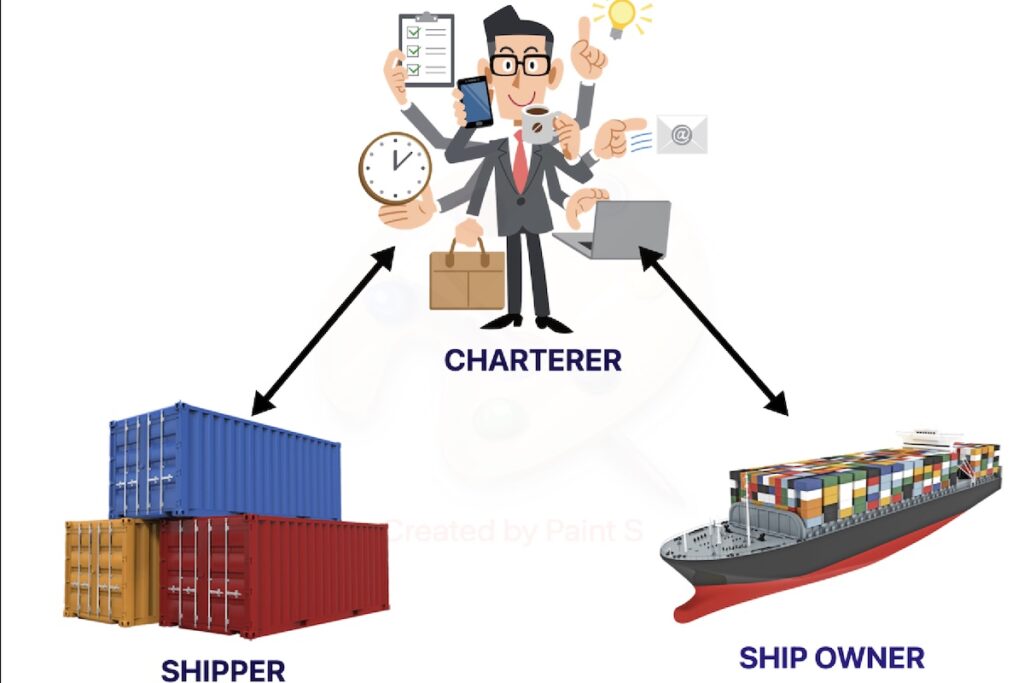
What is Ship Chartering?
Let’s take a closer look at what is ship chartering. Ship chartering is the process of entering into an agreement where a shipowner agrees to rent out their vessel to a cargo owner to carry freight from one port to another.
The two parties involved in this process are the shipowner, who is the legal entity registered as the owner of the vessel, and the charterer, which is a company that has hired out the ship for transporting their goods. A charter contract outlines all of the conditions, obligations, and details related to how these agreements are established.
Sometimes a charterer may also be a party that does not have cargo but takes a vessel on hire for a predetermined period from a shipowner. This party then trades the ship to carry cargo at a profit that is greater than the hire rate or even makes a profit in a rising market by re-letting the ship out to other charterers.
Sometimes operators employ a ship and then re-employ the vessel for further business chartering. In such a new role they are described as disponent owners or time charter owners. A disponent owner is a party deemed to be the shipowner having control of the vessel by time charter
Chartering activity relies heavily on the services of brokers who may either be hired to locate a ship that will deliver the cargo for a specified fee known as the freight rate – ship brokerage, or brokers who locate cargo for ships- cargo brokerage.
Rates for transporting freight can be calculated based on the number of tons transported along a particular route, or they can be stated as a total amount – typically denominated in United States dollars – each day for the period of the charter that has been agreed upon.
What Are the Different Types of Ship chartering
The process of ship chartering is an important one in the world of maritime transportation . In order to understand ship chartering, it is first important to understand the different types of ship charters that exist.
There are three main types of ship charters: Bareboat, Time, and Voyage. Each type of charter has its own unique benefits and drawbacks that should be considered before entering into an agreement.
The various costs associated with chartering which are as follows are shared amongst the shipowner and charterer according to the type of charter. Ship operating costs. are costs that do not vary with ship use but are essentially incurred in the running of the vessel. They include crew costs, stores, maintenance & repairs, insurance, and administration
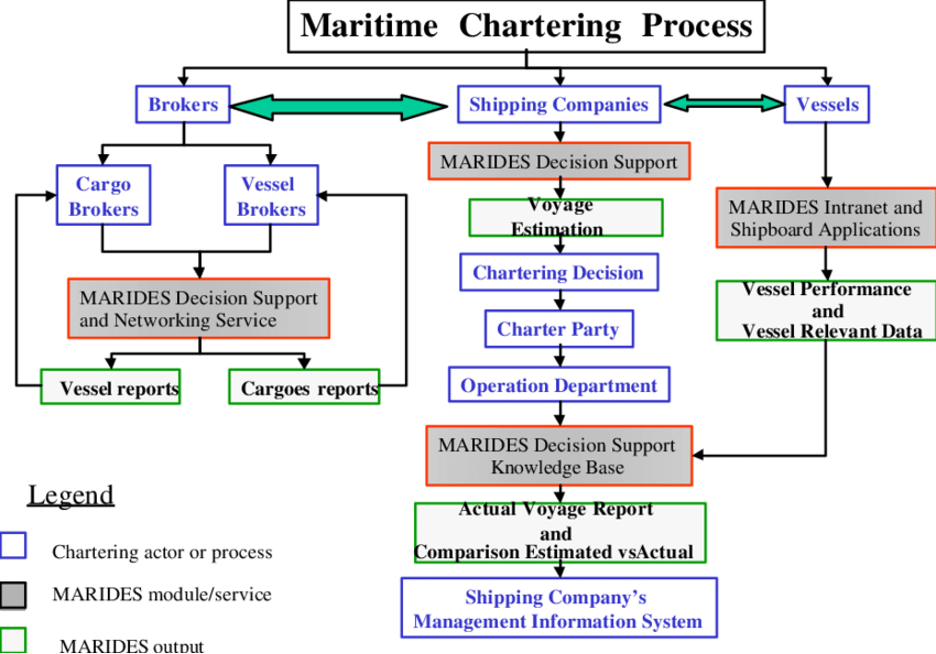
Voyage Costs on the other hand are expenses associated with moving the vessel from one port to another. They include port charges, light dues, stevedoring charges , cleaning holds, cargo claims, bunker fuel , and canal fees .
Voyage Charters
Voyage chartering is a contract in which the shipowner agrees to carry a specific cargo on their vessel for a single trip from one or more loading ports to one or more discharge ports. The payment for this service is called freight, and the contract is called a voyage charter party.
Voyage charters are typically between the shipowner or despondent owner and the charterer. The person who charters the ship is known as the voyage charterer, while the person who charters out their ship is known as the shipowner or deponent owner. This form of contract is often selected when the charterer has no experience in operating a ship, or when they only need to transport one consignment of cargo from one place to another.
Under a voyage charter, the master is appointed by the owner, revenue depends on the quantity of cargo and rate, and the shipowner is responsible for both operating and voyage costs. There are different forms of voyage chartering which are: single voyage chartering return voyage chartering, consecutive single-voyage chartering, and consecutive return voyage chartering
A voyage charter indicates a specific vessel, specific cargo, specific port, and specific route. The rights, duties, and responsibilities of ship owners and charterers are determined by the charter party, and the payment by the charterer to the shipowner for the chartered vessel is usually called freight instead of hire. The ship-owner can charter out the whole vessel or part of her space to the charterer. There are provisions made for laytime, demurrage, and dispatch
Time Charters
A time charter is when a ship owner offers a designated manned ship to a charterer to use for a set time period in exchange for a hire fee rather than for a set number of voyages or excursions. The entire or a portion of the ship is hired, and the hire is computed and paid based on the period of the charter and the agreed-upon hiring rate. The delivery and redelivery of the vessel are covered by stipulations.
Loading and unloading fees are often excluded from time charter rates. The duration of the charter could be for a single trip, many months, or even a few years. The time charterer could be a cargo owner who always requires transportation or a shipowner who needs to temporarily expand his fleet but does not want to invest in a ship but wants to be in charge of its commercial operation. A speculator taking a position in anticipation of a shift in the market may be the charterer.
The charterer is responsible for all expenses directly related to using the vessel, such as port fees and bunker costs, and they also cover loading and unloading. In a time charter, the shipowner, who is also in charge of the maintenance and navigational operation of the vessel as well as the management of the cargo, employs the crew.
The costs of the crew’s salary and rations are covered by the shipowner, who is also in charge of the manning of the vessel. In terms of employment and agency, the master is subject to the charterer’s orders and directives.
The ship owner must, upon receiving a complaint from the charterer, make any necessary changes to the appointments of the master and officers if the charterer has good grounds to be unhappy with their performance.
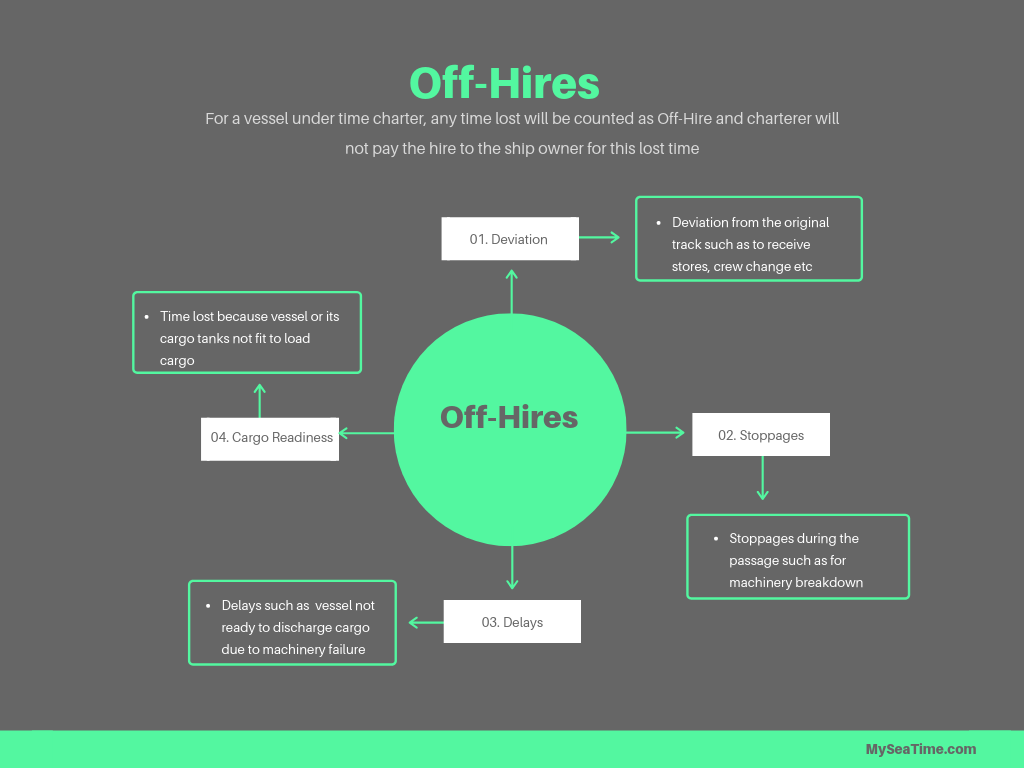
The charterer is in charge of running the ship and is responsible for paying all variable operating expenses like bunkers , port fees, handling fees, tolls on canals, etc.
The shipowner is responsible for paying the fixed operating expenses such as the cost of the ship’s capital, upkeep, supplies, insurance premiums, etc. Time charters are typically used for shorter-term leases and offer more flexibility to the charterer.
Bareboat Charters
The bareboat charter or demise charter is a different kind of charter. According to this agreement, the shipowner is leasing the ship to the charterer. Bareboat chartering typically involves placing a vessel at the charterer’s disposal for an extended length of time without any crew.
Thus, other than paying capital costs, the charterer will assume nearly all of the shipowner’s duties. This implies that the charterer will be financially responsible for the vessel’s maintenance, personnel expenses, insurance, and other charges, in addition to having commercial and technical responsibility for it.
Compared to other contract forms, bareboat chartering is less frequent. When a shipowner or ship operator wants to operate ships or add to his fleet for a while without making the financial obligations of true ownership, but at the same time has to have full control of the chartered vessel, including control over its navigation and management, it may be employed.
Additionally, bareboat chartering is occasionally used in conjunction with the financial plans for the vessel’s installment purchase. The bareboat charter then functions as a hire/purchase agreement, under which the shipowner/seller maintains legal ownership of the vessel and, consequently, security in it, up until the full purchase price is paid.
By employing the master and crew, a time charter differs from a bareboat charter. The master and crew are still the shipowner’s workers when a time charter is in place, but they will be under the time charterer’s control. As a result, the time charterer does not acquire ownership of the ship. With a bareboat charter, the charterer employs the master and crew and therefore assumes ownership of the ship.
What Are the Benefits of Ship Chartering?
There are many benefits that come with chartering a ship. First and foremost, chartering a ship is a great way to save money on transportation costs. Shipping cargo via a charter vessel can be up to 50% cheaper than shipping via a liner vessel.
Another benefit of chartering a ship is that it gives the charterer complete control over the vessel. The charterer gets to choose the route, speed, and port of call for the vessel. This is a great way to ensure that your cargo arrives on time and in good condition.
Finally, chartering a ship is a great way to avoid the hassles and costs associated with owning and operating a vessel. When you charter a ship, you don’t have to worry about things like maintenance, repairs, or crew. This can be a great way to save time and money.
What is a Charter Party?
A Charter Party is the agreement between the party in charge of a ship and a party seeking to use the ship.
A Voyage Charter party contains the names of the parties, the ship’s name and nationality, its deadweight and bale or grain capacity, the description of the goods to be loaded, the port of loading and discharge, lay days , the time for loading and discharge, the payment of freight, demurrage, despatch, and other pertinent information. There are more standard forms of voyage charter party than any other type of agreement.
The most well-known and often used general-purpose voyage charter party worldwide for all types of trades and for many different types of cargoes is the Uniform General Charter, also known by the code name GENCON and here is the latest published version by BIMCO . When these forms are used, multiple additional clauses usually referred to as rider clauses will be attached to address situations that the written provisions do not address.
There are several time forms for usage in the time chartering industry, although significantly less than the extensive selection offered for voyage chartering. The NYPE (New York Produce Exchange (NYPE 93) (amended 2001) and BALTIME (Baltic and International Marine Council (BALTIME 1939) are the two main types used for time charters. The NYPE Charter Party forms the basis for the vast majority of time charters.
There is just one widely used standard form for bareboat charter parties, and that is the BARECON form created by BIMCO. There are several clauses in this form that are frequently seen in time charter parties, as can be seen by closely examining it.
Particularly, if included in a time charter party, the provisions pertaining to delivery, canceling, trading limitations, surveys, inspections, hire, redelivery, general average, war, commission, and law and arbitration would be similarly effective.
Charter abbreviations
ATDNSHINC = Any Time Day or Night Sundays and Holidays Included
ATUTC = Actual Times Used to Count
FHEX = Fridays/Holidays Excluded
FHINC = Fridays/Holidays Included
FILO = Free In/Liner Out. Seafreight with which the shipper pays load costs and the = carrier pays for discharge costs.
FIO = Free In/Out. Freight booked FIO includes the sea freight, but no loading/discharging costs, i.e. the charterer pays for the cost of loading and discharging cargo.
FORCE MAJEURE = Clause limiting responsibilities of the charterers, shippers, and receivers due to events beyond their control.
SSHEX (or SATSHEX) = Saturdays, Sundays, Holidays Excluded
SSHINC = Saturdays, Sundays, Holidays Included (or SATSHINC)
WPD = Weather Permitting Day
WWD = Weather Working Day
Ship chartering is a great way to save money on transportation costs and avoid the hassles and costs of owning and operating a vessel. There are three main types of ship charter: Bareboat, Time, and Voyage.
Each type of charter has its own unique benefits and drawbacks. When chartering a ship, it’s important to understand the terms of the contract and to have the financial resources in place to make the initial payment and cover the costs of operating the vessel

About the author
I worked as an officer in the deck department on various types of vessels, including oil and chemical tankers, LPG carriers, and even reefer and TSHD in the early years. Currently employed as Marine Surveyor carrying cargo, draft, bunker, and warranty survey.
Leave a Reply Cancel reply
Your email address will not be published. Required fields are marked *
Save my name, email, and website in this browser for the next time I comment.
Latest posts

Fiberglass vs. Steel: Which Is More Reliable?
Shipping professionals should get the most from their investment, so which is more reliable: steel vs. fiberglass? Here’s how to determine the better option.

What Does a Longshoreman Do?
Longshoremen play a critical role in the global supply chain, bringing billions worth of cargo into the country. So what does a longshoreman do exactly?

The Ocean Warming Effects on Marine Life
The last few decades have seen ocean temperatures rise as climate change begins to affect maritime industries worldwide. Here are the ocean warming effects on marine life seen so far.
- Search Search Please fill out this field.
- Fundamental Analysis
- Sectors & Industries
Time Charter Equivalent (TCE): Definition and How It's Calculated
Adam Hayes, Ph.D., CFA, is a financial writer with 15+ years Wall Street experience as a derivatives trader. Besides his extensive derivative trading expertise, Adam is an expert in economics and behavioral finance. Adam received his master's in economics from The New School for Social Research and his Ph.D. from the University of Wisconsin-Madison in sociology. He is a CFA charterholder as well as holding FINRA Series 7, 55 & 63 licenses. He currently researches and teaches economic sociology and the social studies of finance at the Hebrew University in Jerusalem.
:max_bytes(150000):strip_icc():format(webp)/adam_hayes-5bfc262a46e0fb005118b414.jpg)
Yarilet Perez is an experienced multimedia journalist and fact-checker with a Master of Science in Journalism. She has worked in multiple cities covering breaking news, politics, education, and more. Her expertise is in personal finance and investing, and real estate.
:max_bytes(150000):strip_icc():format(webp)/YariletPerez-d2289cb01c3c4f2aabf79ce6057e5078.jpg)
What Is Time Charter Equivalent (TCE)?
Time charter equivalent (TCE) is a shipping industry measure used to calculate the average daily revenue performance of a vessel. Time charter equivalent is calculated by taking voyage revenues, subtracting voyage expense, including canal, bunker and port costs, and then dividing the total by the round-trip voyage duration in days. It gives shipping companies a tool to measure period-to-period changes.
Key Takeaways
- Time charter equivalent (TCE) is a method for determining the net profit or loss of operating a vessel per day.
- Voyage expenses are mainly fuel and the costs related to maintaining the crew onboard in terms of salary but also food and quarter.
- Looking at TCE provides shipping companies a way to track period-by-period changes.
Understanding Time Charter Equivalent
The time charter equivalent is calculated as:
(Voyage Revenues - Voyage Expenses) Round Trip Duration in Days
It can also be calculated on a per-day basis based on period, spot and weighted average .
TCE revenue is used as a measure of performance to track performance from one period to another but it is a non-GAAP measure. Companies may still choose to report it in their financial statements as a footnote.
The TCE is used by cargo brokers in the shipping industry to present chartering opportunities to shipowners. Chartering opportunities differ widely in potential revenues and costs. The TCE is a way to describe these opportunities in a standardized way — essentially dollars per day — making comparisons easier for shipowners.
Why Per-Day Costs Matter
The single largest variable costs of a voyage are fuel and the cost related to crew upkeep, and this varies in direct relationship to the speed at which the voyage is performed. The speed of the laden part of the voyage is agreed with the charterer when the voyage charter is negotiated. The ship owner or, if there is one, the time charterer chooses the speed of the vessel for the ballast voyage (when the ship is empty of cargo) sailing the ship to a position where it can load a cargo for the voyage charter. In both cases the slower the ship, the lower the fuel cost as consumption will be lower and the faster the ship, then the higher the fuel consumption and therefore the cost.
The slower a ship sails, the longer the voyage (more days) but the less fuel it consumes. So the calculation of the TCE will be affected in two ways (as the Freight lump sum remains the same). The net freight will go up because of the savings made on the fuel but at the same time, it will be divided by more days taking the TCE down. Therefore a ship should only go slower if the cost of fuel, saved by slower sailing, offsets the reduction of the TCE caused by the increase in the number of days the voyage lasted. Finally, if the fuel cost saving justifies slower sailing then the owner will look to the lost opportunity of the days that could have been spent on the next voyage compared with the improvement in TCE from slower steaming on the current voyage. This is a very important point but the decision must be taken at the start of a voyage.
:max_bytes(150000):strip_icc():format(webp)/GettyImages-452089781-f97ce4857a7542618ec6c84cb2f64ecd.jpg)
- Terms of Service
- Editorial Policy
- Privacy Policy
- Your Privacy Choices

IMAGES
COMMENTS
A time charter is a time-bound agreement, as opposed to a voyage charter. The shipowner leases a vessel to a charterer for a fixed period of time, and they are free to sail to any port and transport any cargo, subject to legal regulations.
A Trip Time Charter (TCT) is a type of charter agreement in the shipping industry. It is a contract between the shipowner and the party hiring the ship for a specific voyage or trip. In a Trip Time Charter (TCT) the ship is chartered for a fixed period or for a specific voyage from one port to another.
With a time charter, you're tied into a long contract, committing you to ongoing payments. Voyage charters, on the other hand, only last for the duration of the voyage, meaning voyage charters are generally much shorter than time charters. This all means that those looking for the shortest contract should opt for a voyage charter.
Voyage charter contracts focus on a single journey and provide flexibility in cargo routes, whereas time charter contracts involve hiring a vessel for a defined period, offering greater control and versatility. The financial arrangement, duration, and cargo requirements are factors that differentiate these two contract types.
2. Voyage Charter. A voyage charter agreement, as the name suggests, is focused on a specific voyage or journey. In this arrangement, the shipowner provides the vessel to the charterer for a single voyage, from a designated port of loading to a port of discharge. Voyage charters are ideal for one-time cargo movements or irregular routes.
Voyage Charter: Navigating the Waters of Single Voyage Agreements. A voyage charter, often called a "trip charter," is a maritime agreement that revolves around a specific journey from one port to another. This contract type is particularly suitable for shippers with cargo to transport on a one-off basis or for a single voyage.
Time Charters. Time charters are one of the most common types of charterparties. In a time charter, the shipowner leases the vessel to the charterer for a specific period, usually several months to several years. The charterer pays hire to the shipowner and has more control over the vessel's operations during the charter period. Voyage Charters
Time charter and voyage charter: general guide. This is an introductory article on time charters and voyage charters. There are three main types of charters in shipping: Time charter. Bareboat charter (demise charter). Charters are often compared to taxis because it is the most straightforward analogy to understand.
Voyage charter definition : The voyage charter is a contract (voyage charter party) between the shipowner and the charterer wherein the shipowner agrees to transport a given quantity of a shipment, using a pre-nominated vessel for a single voyage from a nominated port (say X) to a nominated port (say Y), within a given time period.
The three most common types of charter contracts are the voyage charter, the time charter, and the demise (or bareboat) charter. Voyage Charter. The basic hiring of a vessel and its crew for a voyage between the port of loading and the port of discharge is known as a voyage charter. In this type of contract, the ship owner is paid by the ...
Elements of Time Charter. A Time Charter (TC) is a type of vessel chartering and a vessel employment contract between two counterparties: the Owner and the Charterer. Each counterparty has different responsibilities and concerns, which are captured in the Charter Party Agreement. Some key Time Charter contract terms to know are: the vessel's ...
Chartering is an activity within the shipping industry whereby a shipowner hires out the use of their vessel to a charterer. The contract between the parties is called a charterparty (from the French "charte partie", or "parted document"). The three main types of charter are: demise charter, voyage charter, and time charter .
A charter party is a legal contract that outlines the terms and conditions for chartering a vessel. It serves as an agreement between the owner of the vessel (the owner or charterer) and the party or company who charters the vessel (the charterer). The charter party establishes the rights, responsibilities, and obligations of both parties ...
Voyage charter: A voyage charter is a contract for the carriage of a specific cargo from one port to another. The charterer pays the shipowner a freight rate per ton of cargo or a lump-sum amount for the entire voyage. Time charter: A time charter is a contract for the hire of a vessel for a specific period of time. The charterer pays the ...
Time charter definition: It is a contract (time charter party) between the shipowner and the charterer wherein the shipowner agrees to let the charterer hire the vessel & its crew for a pre-defined period at an agreed amount payable by the charterer. ... Trip time charter (TCT): A trip t/c is a short-term time charter where the vessel performs ...
Voyage Charter: A voyage charter involves hiring a vessel for a specific voyage or route. The shipowner retains control over the vessel's operations, while the charterer pays a lump sum or freight rate for the transportation service. Voyage charters are ideal for one-off shipments or when cargo volumes are uncertain.
Charter parties, the legal contracts for chartering vessels, are the backbone of international shipping. They define the rights and obligations of shipowners and charterers, ensuring smooth operations on voyages. Whether it's a time charter or a voyage charter, these agreements play a crucial role in facilitating global trade for carriers.
Voyage Charter Pros. Voyage Charter provides a flexible means by which a ship can be provided for the carriage of a specific cargo between two specific ports. To this extent it will provide cover for a cargo interest's short-term requirement to move cargo from X to Y. Additionally, a shipowner can provide short-term employment for the ship by ...
Time Charter Trips explored. The time charter trip or "TCT" is a common hybrid, with attributes of both time and voyage charters. The charter is typically for a certain trip or voyage, as with a voyage charter, but hire is payable (not freight), as with a time charter. However, the freedom of the TCT charterer to direct the Vessel has long been ...
voyage charter meaning: a situation in which a ship or plane is rented for a particular journey or a number of journeys. Learn more.
A time charter is when a ship owner offers a designated manned ship to a charterer to use for a set time period in exchange for a hire fee rather than for a set number of voyages or excursions. The entire or a portion of the ship is hired, and the hire is computed and paid based on the period of the charter and the agreed-upon hiring rate.
Cost and Responsibility: Bareboat charters come with higher costs and responsibilities for the charterer, as they assume all vessel-related expenses and risks. Time charters, on the other hand, shift most of these costs and responsibilities back to the shipowner. Contract Duration: The duration of the charter is an essential factor.
Time Charter Equivalent - TCE: A shipping industry standard used to calculate the average daily revenue performance of a vessel. Time charter equivalent is calculated by taking voyage revenues ...